Wray Castle Ltd offers a comprehensive range of 4G training courses designed to equip professionals with the knowledge and skills needed to excel in the rapidly evolving telecommunications industry. With the widespread adoption of 4G technology, there is a growing demand for individuals who are well-versed in the intricacies of LTE networks, protocols, and deployment strategies.
Our 4G training courses cover a wide range of topics, including LTE fundamentals, radio access network (RAN) design, optimization and troubleshooting, core network architecture, and network security. Whether you are a telecom engineer looking to deepen your understanding of 4G technologies or a network administrator seeking to enhance your skills, our courses are tailored to meet your specific learning needs.
One of the key benefits of our 4G training courses is the hands-on experience they provide. Our expert instructors guide participants through practical exercises and real-world case studies, giving them the opportunity to apply their knowledge in a simulated environment. This hands-on approach ensures that learners not only understand the theoretical concepts but also gain valuable practical skills that can be immediately applied in their day-to-day work.
In addition to the technical aspects of 4G technology, our courses also cover the latest trends and developments in the industry, such as the transition to 5G networks and the integration of IoT devices. By staying up-to-date with the latest advancements in telecommunications, our learners are better equipped to navigate the ever-changing landscape of the industry and stay ahead of the competition.
Whether you are new to the field of telecommunications or a seasoned professional looking to expand your expertise, our 4G training courses offer a valuable opportunity to enhance your skills and advance your career. Join us at Wray Castle Ltd and take the first step towards becoming a certified 4G expert.
4G Training Courses
-

Wray Castle Hub (12 Month Subscription)
Annual Telecoms Training Subscription Package with Unlimited access to 500+ hours of key training material Empower your professional development by building your knowledge of key technology and business topics within the telecoms industry. Unlimited access to future new courses that will cover the latest technology developments as they are added to Hub throughout your 12-month subscription period. Endlessly flexible and applicable to any role within the telecoms industry a subscription to Wray Castle Hub is your ultimate learning resource. You can choose to follow one of our suggested learning pathways, build your own or dip into the learning material module by module. The Wray Castle Hub is also available as an 6-Month Subscription for £945. Learn more here.
£1,400.00
-
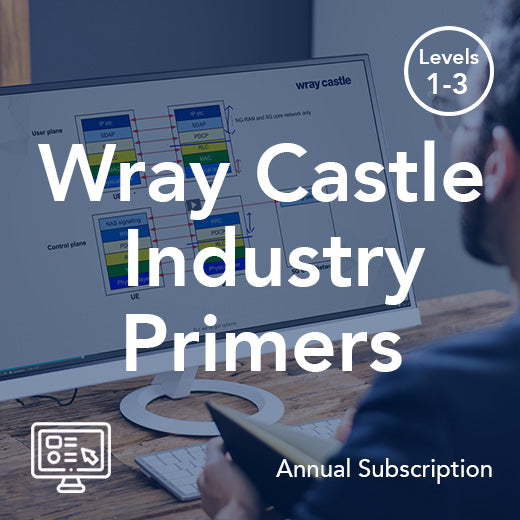
Wray Castle Industry Primers Collection
The Wray Castle Industry Primer collection gives you unlimited access to our growing library of short, focused online training courses. Get upskilled on your chosen topics in just 3 hours with our collection of new short online primers. Our primers cover the key technology and business topics shaping the industry today and tomorrow. You'll benefit from videos, illustrated course books, dedicated tutor support, and regular assessments and earn digital badges to showcase your achievements. A subscription gives you access to all the existing primers below plus all future primers as and when they are published, so you'll always stay ahead of the latest developments across the industry.
£450.00
-
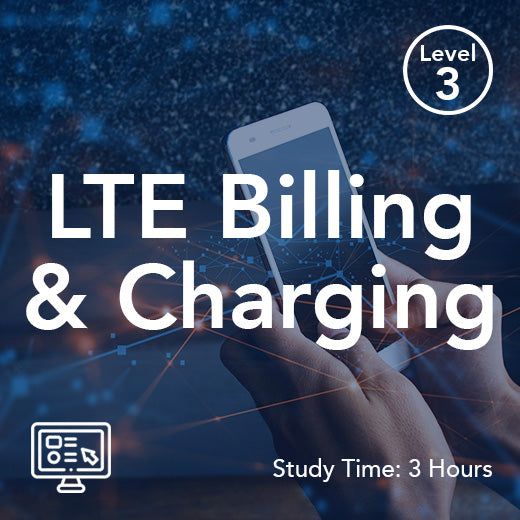
LTE Billing and Charging (On-Demand)
Our LTE Billing and Charging Training Course provides a comprehensive technical overview of the billing and charging architecture specifically designed for 4G LTE networks. Participants will gain insights into LTE bearer, traffic flow, and Quality of Service (QoS) concepts, as well as an in-depth understanding of the architecture of both online and offline billing systems. Key nodes, interfaces, and protocols used for transporting billing and charging information will be explored, along with the interactions with the billing system during basic LTE procedures. This course is ideal for engineers, designers, managers, and individuals involved in the development, deployment, or operation of LTE billing and charging systems. Familiarity with the LTE Evolved Packet Core is assumed, and experience with 2G or 3G billing systems would be beneficial. Topics covered include EPS bearer concepts, LTE QoS models, packet flows, deep packet inspection, policy and charging control, flow-based charging, billing architecture, charging data capture points, protocols (Diameter, CAP), interfaces (Gy, Gz, Rf, Ro), charging criteria, CDR formats, CDR generation, and charging interaction with basic LTE procedures. Join us for this informative and practical training session to enhance your knowledge and skills in LTE billing and charging. This self-paced on-demand distance learning course features illustrated course books, videos, tests and full tutor support. Who would benefit Engineers, designers, managers and others involved in the development, deployment or operation of LTE billing and charging systems. Prerequisites Familiarity with the LTE Evolved Packet Core is assumed. Experience of 2G or 3G billing systems would be beneficial. Topic Areas Include Review of EPS bearer concepts and LTE QoS models Packet flows, service data flows and traffic flow aggregates Deep packet inspection – heuristic algorithms and bearer-aware applications Outline of policy and charging control LTE billing and charging concepts Flow-based charging Billing architecture Online and offline charging systems Charging data capture points (S-GW, PDN-GW) IMS charging capture points Charging Data Function (CDF) Protocols – Diameter, CAP Interfaces – Gy, Gz, Rf, Ro and others Charging criteria – time-based, volume-based, application-based CDR formats CDR generation Charging interaction with basic LTE procedures
£95.00
-

Applied Telecoms Engineering Programme (Cellular Radio Engineer)
The Applied Telecoms Engineering Programme (Cellular Radio Engineer Track) distance learning programme provides learners with a qualification that demonstrates their knowledge of the technologies underpinning the telecoms industry with a focus on cellular radio engineering. Students will gain a through foundation in the telecoms industry and the technologies on which it’s based as well as a comprehensive understanding of the technologies underpinning radio access networks and techniques needed to design, plan, build, monitor and optimise modern cellular radio networks. This programme has been assured by City & Guilds. Assured status provides validation and recognition for the learner. It is a symbol of learning excellence and quality and is a reassurance that the training undertaken meets best practice standards. Applied Telecoms Engineering Programme (Cellular Radio Engineer Track) Syllabus Foundation Courses Technology Fundamentals Course Modules: Defining Telecoms Background to the Telecom Network Digital Fixed Telecom Networks Data Networks Mobile Networks and Wi-Fi Broadband and Emerging Networks 2G to 5G Mobile Technologies Course Modules: Principles of Mobile Cellular Networks 2nd Generation Mobile Networks 3rd Generation Mobile Networks 4th Generation Mobile Networks 5th Generation Mobile Networks Telecoms – as an Industry and Business Course Modules: Telecoms Industry & Business Dynamics The Technology Explained & Evaluated Telecoms Industry & Market Update Specialist Courses LTE Air Interface Course Modules: LTE Overview OFDM Principles Physical Layer Structure Layer 2 Protocols Radio Resource Control LTE-Advanced Lower Layer Procedures 5G Air Interface Course Modules: Principles of the 5G New Radio Introduction to the Physical Layer Physical Layer Implementation and Procedures Higher Layer Protocols Signalling Procedures What you will learn: At the end of the programme successful students will be able to: Develop a fundamental understanding of the technologies underpinning modern telecoms networks, the industry structure and its key stakeholders . Gain a detailed understanding of the air interface for LTE radio access (incl. OFDMA principles, channel structures, connectivity and mobility management and radio link control functions.) Have a detailed technical understanding of the air interface for the 5G New Radio, the principles of mm wave and multiple antenna communications, the architecture of the AI’s physical layer, the higher layer air interface protocols, and the signalling procedures. Expand their learning further by studying two elective modules to qualify for the Diploma in Telecoms. What sets the programme apart? Focused Learning Pathways – guide you through the material and enable you to become an expert in your chosen field. Flexible Learning – study at a time, location and pace of your choice. Full Tutor support – from industry experts with decades of experience throughout your studies. Extended Learning – Diploma students have the opportunity to study 3 additional courses. 24 months access – allowing you to refer back to the material after your studies. Digital Badges and Course Certificate – demonstrate the depth of your knowledge. About City & Guilds City & Guilds is a household brand and a global leader in skills development. Over one million people earn a City & Guilds qualification every year, providing them with the skills they need to thrive in the workplace.In the global economy, the ability to compete depends on building a skilled, competent and confident workforce. City & Guilds understands the value of portable skills and globally recognised standards that enable people and organisations to succeed. It partners with Governments, employers and educators in over 50 countries, across five continents, to advise them on developing high-quality skills training that meets the needs of the global workforce, without compromising on local demands. Enrolment Fees: £2,995 (+VAT) Programme Duration: 24 months (Programme is On-Demand, learners can start at any time) Bespoke In-Company Schemes The Applied Telecoms Engineering Programme provide the ideal structure for formalising training programmes for teams across your business. Contact us on info@wraycastle.com for more information.
£2,995.00
-
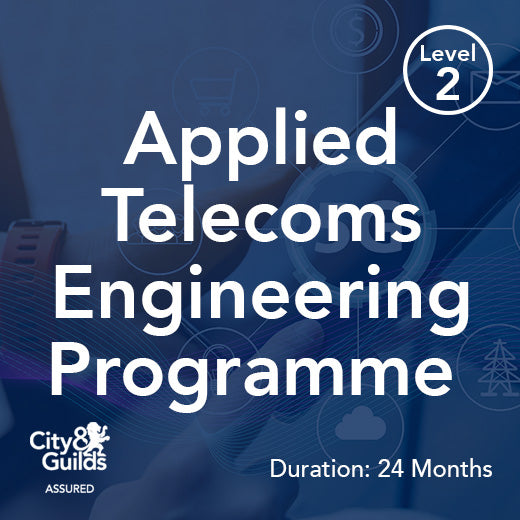
Applied Telecoms Engineering Programme (Core Network Engineer)
The Applied Telecoms Engineering Programme (Core Network Engineer Track) distance learning programmes provides learners with a certified qualification that demonstrates their knowledge of the technologies underpinning the telecoms industry with a focus on core network engineering. Students will gain a through foundation in the telecoms industry and the technologies on which it’s based as well as a deep understanding of the core network procedures, processes and service provision concepts for 4G and 5G Networks. This programme has been assured by City & Guilds. Assured status provides validation and recognition for the learner. It is a symbol of learning excellence and quality and is a reassurance that the training undertaken meets best practice standards. Applied Telecoms Engineering Programme (Core Network Engineer Track) Syllabus Foundation Courses Technology Fundamentals Course Modules: Defining Telecoms Background to the Telecom Network Digital Fixed Telecom Networks Data Networks Mobile Networks and Wi-Fi Broadband and Emerging Networks 2G to 5G Mobile Technologies Course Modules: Principles of Mobile Cellular Networks 2nd Generation Mobile Networks 3rd Generation Mobile Networks 4th Generation Mobile Networks 5th Generation Mobile Networks Telecoms – as an Industry and Business Course Modules: Telecoms Industry & Business Dynamics The Technology Explained & Evaluated Telecoms Industry & Market Update Specialist Courses LTE Evolved Packet Core Course Modules: LTE Overview Evolved Packet Core Data Transport in the EPC Major Protocols EPC Operation Release 9 and Beyond 5G Architecture and Protocols Course Modules: Introduction to 5G Radio Access Network Architecture Core Network Architecture Data Transport 5G Protocols 5G Procedures Releases 16 and 17 What you will learn: At the end of the programme successful students will be able to: Develop a fundamental understanding of the technologies underpinning modern telecoms networks, the industry structure and its key stakeholders . Describe the Evolved Packet Core for LTE systems, architecture, interfaces, service provision concepts, application of IP technologies and the overall protocol architectures. Understand the architecture and interfaces used by 5G, the protocols used for signalling and data transport, the provision of services over a 5G network, and the procedures for signalling and system operation. Expand their learning further by studying two elective modules to qualify for the Diploma in Telecoms. What sets the programme apart? Focused Learning Pathways – guide you through the material and enable you to become an expert in your chosen field. Flexible Learning – study at a time, location and pace of your choice. Full Tutor support – from industry experts with decades of experience throughout your studies. Extended Learning – Diploma students have the opportunity to study 3 additional courses. 24 months access – allowing you to refer back to the material after your studies. Digital Badges and Course Certificate – demonstrate the depth of your knowledge. About City & Guilds City & Guilds is a household brand and a global leader in skills development. Over one million people earn a City & Guilds qualification every year, providing them with the skills they need to thrive in the workplace.In the global economy, the ability to compete depends on building a skilled, competent and confident workforce. City & Guilds understands the value of portable skills and globally recognised standards that enable people and organisations to succeed. It partners with Governments, employers and educators in over 50 countries, across five continents, to advise them on developing high-quality skills training that meets the needs of the global workforce, without compromising on local demands. Enrolment Fees: £2,995 (+VAT) Programme Duration: 24 months (Programme is On-Demand, learners can start at any time) Bespoke In-Company Schemes The Applied Telecoms Engineering Programme provide the ideal structure for formalising training programmes for teams across your business. Contact us on info@wraycastle.com for more information.
£2,995.00
-
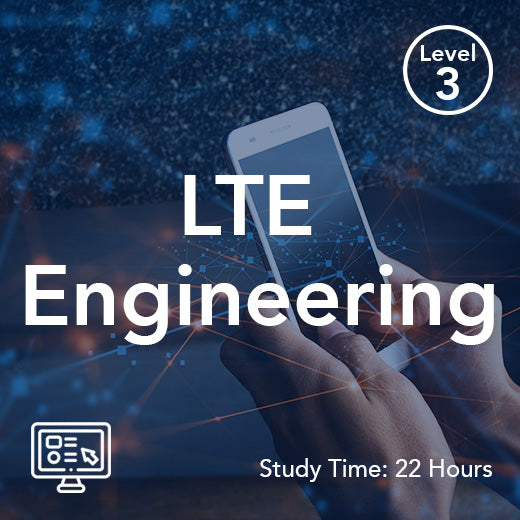
LTE Engineering (On-Demand)
A technical introduction and overview of LTE and LTE-Advanced, including the air interface, radio access network, core network and other key associated technologies. This self-paced on-demand distance learning course features illustrated course books, videos, tests and full tutor support. Who would benefit This course is intended for engineers either new to, or already working in, mobile communications. Prerequisites Familiarity with telecommunications and general engineering terminology is assumed and some understanding of 2G and 3G cellular systems would be beneficial. Topic Areas Include High level architecture of LTE Basic principles of OFDMA and SC-FDMA Air interface protocol stack Structure of the air interface physical layer E-UTRAN architecture, interfaces and protocols EPC architecture, interfaces and protocols LTE state diagrams Principles of bearers and Quality of Service (QoS) Voice options for LTE Power-on procedures UE procedures in idle and connected modes Enhancements in LTE-Advanced
£750.00
-
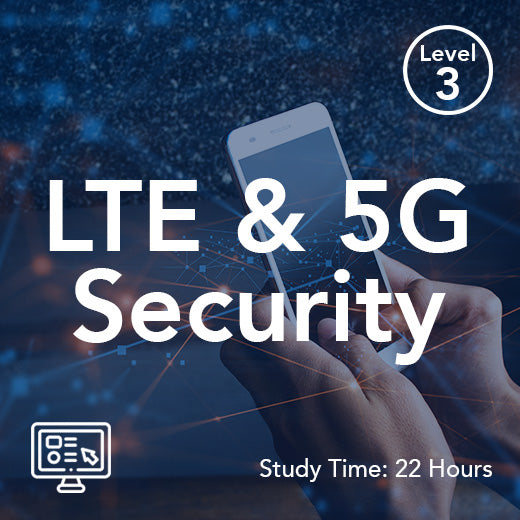
LTE and 5G Security (On-Demand)
LTE and 5G systems play a crucial role in our modern communication landscape, with the potential to revolutionize how we connect and interact with our devices. As these technologies become more prevalent, ensuring the security of our data and privacy becomes paramount. The LTE and 5G Security On-Demand Training Course offered by Wray Castle provides a comprehensive overview of the security measures implemented in LTE and 5G networks, covering key aspects such as authentication, key agreement, and network security protocols. This self-paced distance learning course delves into the intricacies of LTE and 5G security architectures, exploring the evolution from LTE to 5G and the security enhancements introduced in the latest generation of cellular networks. Participants will gain a deep understanding of the security procedures and key derivation methods used in both Non-standalone and Standalone Modes of 5G networks, as well as the authentication and interworking protocols involved in ensuring a secure communication environment. Designed for engineers, managers, and technical professionals working in the telecommunications industry, this course is also beneficial for individuals looking to broaden their knowledge of LTE and 5G security protocols. Whether you are new to the field or have prior experience in telecoms, this training course will equip you with the essential skills and insights needed to navigate the complex security challenges posed by LTE and 5G networks. This self-paced on-demand distance learning course features illustrated course books, videos, tests and full tutor support. Who would benefit This course is designed for engineers, managers and other personnel who have a need to acquire a technical overview of the security environment employed within LTE and 5G networks. It will also be of benefit to those in the wider technical community who have a need to understand the security protocols employed by cellular networks. Prerequisites Attendance on, or equivalent knowledge, LTE Engineering or 5G Engineering would be useful. Alternatively, experience working in this area of telecoms. Topic Areas Include LTE Security Architecture Authentication and Key Agreement Evolution to 5G 5G Non-Standalone Mode Security 5G Standalone Mode Security
£750.00
-
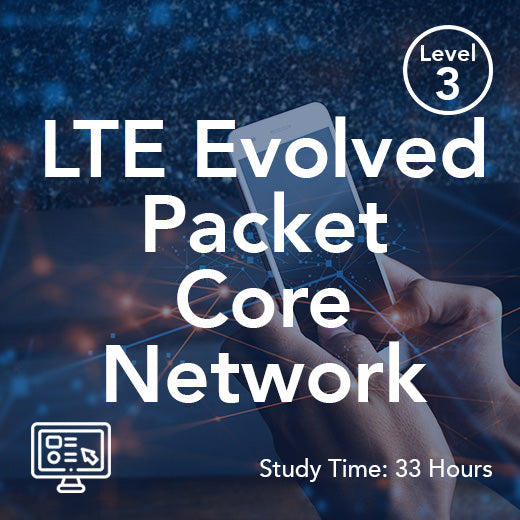
LTE Evolved Packet Core Network (On-Demand)
Our LTE Evolved Packet Core Network Training Course is designed to provide a comprehensive technical understanding of the Evolved Packet Core (EPC) for LTE systems. In this course, participants will learn about EPC architecture, interfaces, service provision concepts, application of IP technologies, overall protocol architectures, and optionally, a review of IMS functionality Engineers and other staff involved with switching or transmission architecture, optimization, network management, network testing, or monitoring of the EPC would greatly benefit from this training. Participants are expected to have an engineering background with some knowledge of core network technologies, including IP. Experience with 2G or 3G systems would also be beneficial for a better understanding of the course material. The course covers a wide range of topic areas, including the high-level architecture of LTE, functions of key EPC components like MME, S-GW, PDN-GW, HSS, and PCRF, LTE state diagrams, inter-operation with 2G, 3G, and non-3GPP networks, voice options for LTE, principles of bearers and Quality of Service (QoS), data transport in the EPC, policy and charging control architecture, IETF and 3GPP protocols in the EPC, power-on procedures, UE procedures in idle and connected modes, enhancements in LTE-Advanced, and optionally, an overview of the functions and architecture of the IMS. This self-paced on-demand distance learning course features illustrated course books, videos, tests and full tutor support. Who would benefit Engineers and other staff involved with switching or transmission architecture, optimization, network management, network testing or monitoring of the EPC. Prerequisites An engineering background with some knowledge of core network technologies, including IP, is assumed. Experience of 2G or 3G systems would be beneficial. Topic Areas Include High level architecture of LTE Functions of the MME, S-GW, PDN-GW, HSS and PCRF LTE state diagrams Inter-operation with 2G, 3G and non-3GPP networks Voice options for LTE Principles of bearers and Quality of Service (QoS) Data transport in the EPC Policy and charging control architecture IETF protocols in the EPC, including SCTP, DiffServ and Diameter 3GPP protocols in the EPC, including GTP and S1-AP Power-on procedures UE procedures in idle and connected modes Enhancements in LTE-Advance
£950.00
-

Wray Castle Learning Account
Upskill your workforce with flexible, scalable training solutions The Wray Castle Learning Account offers a flexible, scalable training solution for organizations, enabling upfront budgeting, tailored programs, and comprehensive reporting. Key Features Customised Programmes - Work directly with us to build training programmes tailored to your organization's needs, ensuring budget safety and scalable delivery. Wide Course Variety - Access live sessions, live virtual training, e-learning modules, private team workshops, and expert consultancy services. Upfront Planning - Allocate funds in advance, plan training strategically, align with organizational goals, and gain comprehensive reporting on spend and consumption. Programme Benefits Budget Control & Safety - Maintain complete oversight of training expenditure with upfront allocation. Strategic Alignment - Plan training initiatives with competency assessment options to meet organizational goals. Additional Resources - Access webinars, primers, and supplementary learning materials. Visibility & Reporting - Comprehensive tracking and reporting on training consumption and ROI. Broad Topic Coverage - Wide range of subject areas to address diverse training needs. Simplified Invoicing - VAT invoicing and payment via Purchase Order for streamlined procurement. The Wray Castle Learning Account is ideal for: Organizations seeking to centralize training and budgets. Teams with predictable training spend looking for simplified invoicing and reporting. Organizations requiring scalable training solutions for growing teams L&D and Training Managers who need to demonstrate clear ROI. Ready to transform your training contact us today?
POA: Private Course
-

Wray Castle Hub (6 Month Subscription)
6-Month Telecoms Training Subscription Package with Unlimited access to 500+ hours of key training material Empower your professional development by building your knowledge of key technology and business topics within the telecoms industry. Unlimited access to future new courses that will cover the latest technology developments as they are added to Hub throughout your 12-month subscription period. Endlessly flexible and applicable to any role within the telecoms industry a subscription to Wray Castle Hub is your ultimate learning resource. You can choose to follow one of our suggested learning pathways, build your own or dip into the learning material module by module. The Wray Castle Hub is also available as an Annual Subscription for £1,400. Learn more here.
£945.00
-
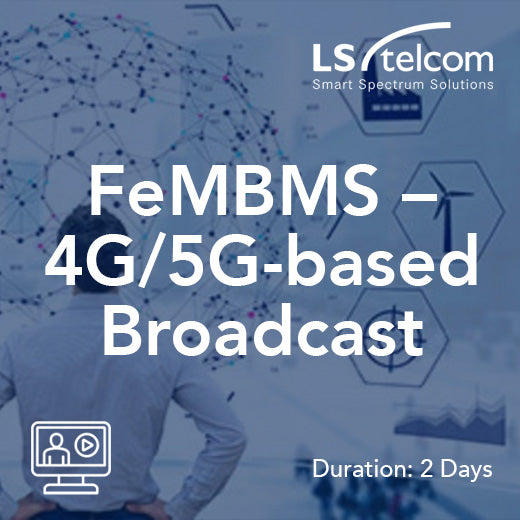
FeMBMS – 4G/5G-based Broadcast (LS telcom)
This training course is aimed at those people working within the wireless communication business or broadcast business. Participants will get an overview on FeMBMS – 4G/5G-based broadcast. The seminar gives an overview on the requirements of broadcast and wireless communication technology and describes how 4G/5G-based broadcast is implemented in the 4G/5G standards. The training is presented in cooperation withRohde & Schwarz. Course Objectives After completing this course, delegates will understand the technology behind FeMBMS – “Further evolved Multimedia Broadcast Multicast Services”. Focus is on the physical layer not on the protocol level. Intended for This course is intended for those who have a basic knowledge in information technology, who may be employed at broadcasters, network operators or regulators. Contents Introduction to „FeMBMS“, 5G/4G-based broadcast Field trials 5G/4G-based broadcast Traditional broadcast DVBIP, IPTV, Streaming, OTT Overview wireless communications from 2G, 3G, 4G to 5G Former mobile broadcast trials and standards, DVB-H/SH, T-DMB, MediaFLO, etc. Traditional Mobile Communication Applications Identification of broadcast applications - for wireless communications “Traditional“ and “Modern“ use-cases in broadcast and in wireless communications Physical layer overview LTE and 5G Single-frequency networks, SFN-requirements FeMBMS – physical layer Comparison to DVB - data rates, robustness, properties, opportunities About LS telcom: LS telcom is a global leader in technologies and consulting services for efficient radio spectrum use, optimizing spectrum management to ensure reliable, interference-free, and secure radio services. Our portfolio includes consulting, measurement services, and integrated solutions for planning, analysis, monitoring, and managing radio infrastructure. Serving customers in over 100 countries, including regulatory authorities, network operators, and industries such as transport, utilities, and security, LS telcom operates globally with subsidiaries and offices in locations like Germany, the UK, Canada, India, and the UAE. Headquartered in Lichtenau, Germany, LS telcom AG has been listed on the German Stock Exchange since 2001 (ISIN DE 0005754402).
£1,650.00
-
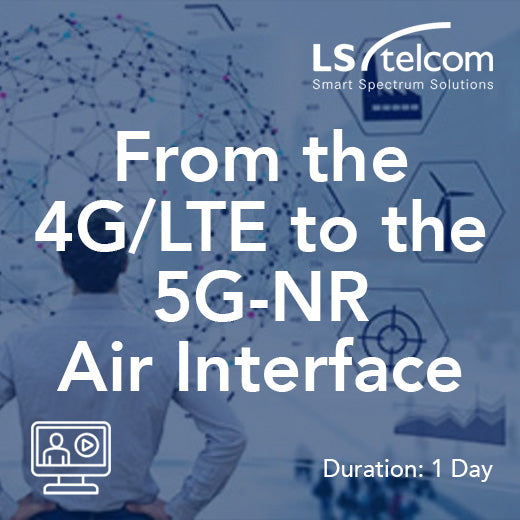
From the 4G/LTE to the 5G-NR Air Interface (LS telcom)
This training course is aimed at those people working within the wireless communication business or broadcast business. Participants will get an overview on the 4G/LTE and 5G-NR physical layer. First of all wireless communication basics like OFDMA, DFTs-OFDMA, Forward Error Correction and MIMO will be discussed followed by an in-depth overview of 4G and 5G technology and standards. The training is presented in cooperation with Rohde & Schwarz. Course Objectives After completing this course, delegates will understand the technology behind 4G and 5G. Focus is on the physical layer not on the protocol level. Several practical demonstrations will solidify the theoretical knowledge. Intended for This course is intended for those who have a basic knowledge in information technology, who may be employed in network operators or regulators. Contents Wireless Communication Basics 4G/LTE Standard 5G Standard About LS telcom: LS telcom is a global leader in technologies and consulting services for efficient radio spectrum use, optimizing spectrum management to ensure reliable, interference-free, and secure radio services. Our portfolio includes consulting, measurement services, and integrated solutions for planning, analysis, monitoring, and managing radio infrastructure. Serving customers in over 100 countries, including regulatory authorities, network operators, and industries such as transport, utilities, and security, LS telcom operates globally with subsidiaries and offices in locations like Germany, the UK, Canada, India, and the UAE. Headquartered in Lichtenau, Germany, LS telcom AG has been listed on the German Stock Exchange since 2001 (ISIN DE 0005754402).
£2,240.00
-
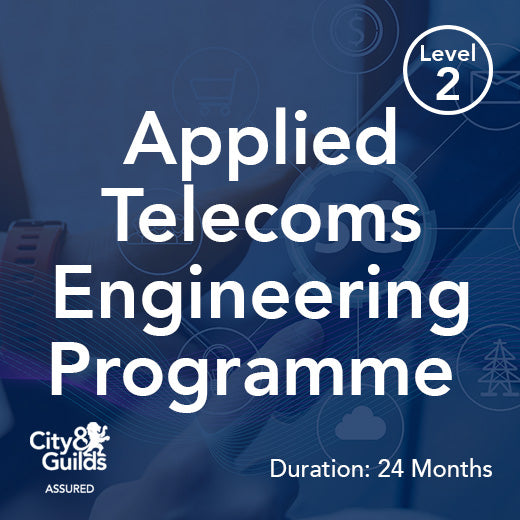
Applied Telecoms Engineering Programme (LTE Engineer Track)
The Applied Telecoms Engineering Programme (LTE Engineer Track) distance learning programmes provides learners with a certified qualification that demonstrates their knowledge of the technologies underpinning the telecoms industry with a focus on LTE core and radio network engineering. This programme has been assured by City & Guilds. Assured status provides validation and recognition for the learner. It is a symbol of learning excellence and quality and is a reassurance that the training undertaken meets best practice standards. Applied Telecoms Engineering Programme (LTE Engineer Track) Syllabus Foundation Courses Technology Fundamentals Course Modules: Defining Telecoms Background to the Telecom Network Digital Fixed Telecom Networks Data Networks Mobile Networks and Wi-Fi Broadband and Emerging Networks 2G to 5G Mobile Technologies Course Modules: Principles of Mobile Cellular Networks 2nd Generation Mobile Networks 3rd Generation Mobile Networks 4th Generation Mobile Networks 5th Generation Mobile Networks Telecoms – as an Industry and Business Course Modules: Telecoms Industry & Business Dynamics The Technology Explained & Evaluated Telecoms Industry & Market Update Specialist Courses LTE Evolved Packet Core Course Modules: LTE Overview Evolved Packet Core Data Transport in the EPC Major Protocols EPC Operation Release 9 and Beyond LTE Air Interface Course Modules: LTE Overview OFDM Principles Physical Layer Structure Layer 2 Protocols Radio Resource Control LTE-Advanced Lower Layer Procedures What you will learn: At the end of the programme successful students will be able to: Develop a fundamental understanding of the technologies underpinning modern telecoms networks, the industry structure and its key stakeholders . Describe the Evolved Packet Core for LTE systems, architecture, interfaces, service provision concepts, application of IP technologies and the overall protocol architectures. Gain a detailed understanding of the air interface for LTE radio access (incl. OFDMA principles, channel structures, connectivity and mobility management and radio link control functions.) Expand their learning further by studying two elective modules to qualify for the Diploma in Telecoms. What sets the programme apart? Focused Learning Pathways – guide you through the material and enable you to become an expert in your chosen field. Flexible Learning – study at a time, location and pace of your choice. Full Tutor support – from industry experts with decades of experience throughout your studies. Extended Learning – Diploma students have the opportunity to study 3 additional courses. 24 months access – allowing you to refer back to the material after your studies. Digital Badges and Course Certificate – demonstrate the depth of your knowledge. About City & Guilds City & Guilds is a household brand and a global leader in skills development. Over one million people earn a City & Guilds qualification every year, providing them with the skills they need to thrive in the workplace.In the global economy, the ability to compete depends on building a skilled, competent and confident workforce. City & Guilds understands the value of portable skills and globally recognised standards that enable people and organisations to succeed. It partners with Governments, employers and educators in over 50 countries, across five continents, to advise them on developing high-quality skills training that meets the needs of the global workforce, without compromising on local demands. Enrolment Fees: £2,995 (+VAT) Programme Duration: 24 months (Programme is On-Demand, learners can start at any time) Bespoke In-Company Schemes The Applied Telecoms Engineering Programme provide the ideal structure for formalising training programmes for teams across your business. Contact us on info@wraycastle.com for more information.
£2,995.00
-
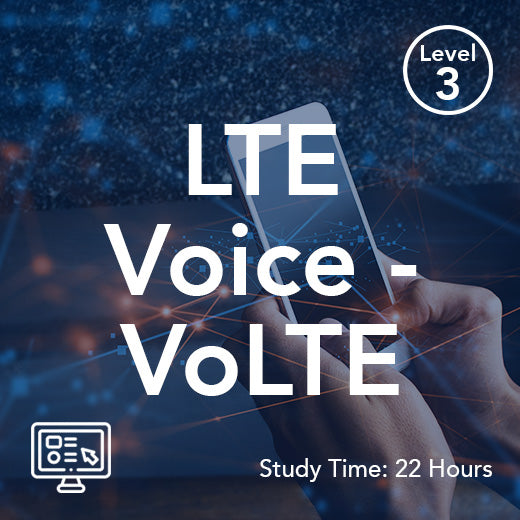
LTE Voice - VoLTE (On-Demand)
Our LTE Voice (VoLTE) training course is designed to provide a comprehensive technical understanding of how VoIP services are delivered using LTE and the IP Multimedia Subsystem. This course is ideal for engineering and technical management professionals looking to gain in-depth knowledge of the options available in LTE for delivering voice and real-time traffic through VoIP. Topics covered in this course include a technical overview of LTE, introduction to LTE voice options, IP Multimedia Subsystem (IMS) overview, Voice over LTE (VoLTE) system architecture, VoLTE protocols, services, and codecs, VoLTE call setup procedures, SRVCC, SMS delivery over IMS, VoLTE emergency calls, and Voice over Wi-Fi. This self-paced on-demand distance learning course features illustrated course books, videos, tests and full tutor support. Who would benefit This course is suitable for engineering and technical management staff who require a technical description of the options that exist in LTE for delivering voice and other real-time traffic types by means of VoIP. Prerequisites Attendance on this course assumes previous attendance on the LTE Engineering Overview course (LT3600) or equivalent basic LTE knowledge (although a recap of basic LTE architecture and concepts is provided at the start of the course) and also assumes a working knowledge of IP. Topic Areas Include Technical overview of LTE Introduction to the options for LTE voice Technical overview of the IP Multimedia Subsystem (IMS) System architecture for Voice over LTE (VoLTE) VoLTE protocols, services and codecs VoLTE power-on and registration procedures VoLTE call setup procedures Access domain selection Single Radio Voice Call Continuity (SRVCC) Delivery of SMS messages over the IMS VoLTE emergency calls Voice over Wi-Fi
£750.00
-
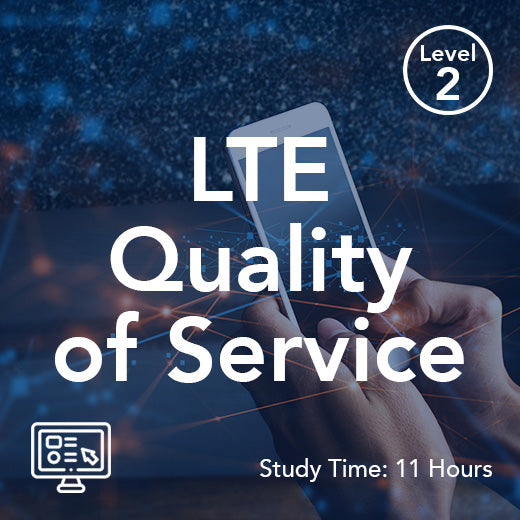
LTE Quality of Service (On-Demand)
Our LTE Quality of Service training course is designed to provide a comprehensive understanding of the key concepts and principles behind Quality of Service (QoS) in LTE networks. This course delves into the End-to-End EPS Bearer and the underlying Transport Network Layer (TNL) where QoS is crucially applied. Participants will explore the main QoS concepts and learn about the interworking between LTE QoS and other network types such as UMTS, GPRS, and IMS.This course is ideal for engineering and technical management professionals who need a technical overview of the technologies and techniques utilized by 4G LTE networks to define and control the QoS for user connections. Participants are expected to have an engineering background with some knowledge of telecommunications technologies and protocols. Previous LTE training and familiarity with QoS mechanisms in legacy 2G and 3G networks would be beneficial.By enrolling in this course, you will gain insights into topics such as E-UTRAN architecture and interfaces, EPS Bearer and PDN Connectivity options, LTE QoS parameters, QCI, ARP, QoS Management, LTE PCC mechanisms, TNL concepts, DiffServ, MPLS, Ethernet QoS, and much more. Enhance your knowledge and skills in LTE QoS with our expert-led training course. This self-paced on-demand distance learning course features illustrated course books, videos, tests and full tutor support. Who would benefit This course is suitable for engineering and technical management staff who require a technical overview of the technologies and techniques employed by 4G LTE networks to define and control the QoS applied to user connections. Prerequisites An engineering background with some knowledge of telecommunications technologies and protocols is assumed and previous LTE training would be beneficial, as would knowledge of QoS mechanisms in legacy 2G and 3G networks. Topic Areas Include E-UTRAN architecture and interfaces EPS Bearer and PDN Connectivity options and operations User plane connection concepts, packet flows, SDFs and Traffic Flow Aggregates LTE QoS parameters, QCI, ARP QoS parameter representation in LTE signalling protocols QoS Management – TFTs and packet filters LTE PCC (Policy and Charging Control) mechanisms PCC Rules, function and structure Interaction between PCC elements and internal and external network nodes Mapping LTE QoS to legacy network schemes Measuring QoS TNL concepts, architecture and QoS mechanisms DiffServ, MPLS and Ethernet QoS End-to-End QoS Architecture and Operation Network node QoS functions QoS influence on LTE handovers
£500.00
-
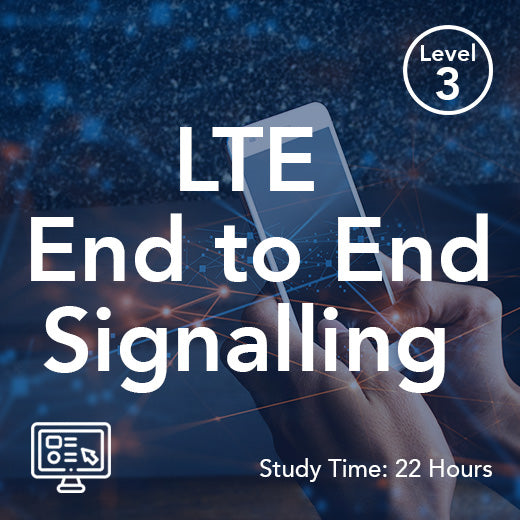
LTE End-to-End Signalling (On-Demand)
This course is designed to provide an end-to-end view of the whole set of signalling messages that support some of the most fundamental LTE network operations, such as: initial attach, PDN Connectivity, EPS Bearer setup, bearer resource allocation, handover and detach. Each procedure is presented in terms of the progression of signalling messages exchanged and each message is explored in detail. The course provides details of messages belonging to the following signalling protocols: RRC, NAS, S1AP, X2AP, GTPv2-C and also the Diameter S6a, S13 and Gx applications. Our LTE End-to-End Signalling Training Course (Course Code: LT1301) offers a comprehensive overview of the signalling messages involved in key LTE network operations. From initial attach to handover and detach procedures, participants will gain a deep understanding of the signalling protocols including RRC, NAS, S1AP, X2AP, GTPv2-C, and Diameter S6a, S13, and Gx applications. This course is ideal for engineers, managers, and personnel seeking a technical overview of the complete LTE signalling environment, providing valuable insights into the management of fundamental LTE procedures. Participants in this course will benefit from a detailed exploration of air interface signalling protocols, E-UTRAN signalling protocols, and EPC signalling protocols. Topics covered include initial attach procedures, idle mode procedures, connected mode procedures, handover procedures, and detach procedures. Prerequisites include a basic understanding of LTE network architecture, services, and protocols, which can be acquired through our LTE Engineering Overview and LTE Evolved Packet Core Network (LT3604) courses. An understanding of IP would also be beneficial for participants. Gain the knowledge and skills needed to navigate the complexities of LTE signalling protocols and procedure This self-paced on-demand distance learning course features illustrated course books, videos, tests and full tutor support. Who would benefit This course is designed for engineers, managers and other personnel who have a need to acquire a technical overview of the total LTE signalling environment (not just signalling in one part of the network) and also those that require an end-to-end view of the management of fundamental LTE procedures. Prerequisites A basic understanding of LTE network architecture, services and protocols, which can be gained from attending the LTE Engineering Overview (LT3600) and LTE Evolved Packet Core Network (LT3604) courses. An understanding of IP would be beneficial. Topic Areas Include Air interface signalling protocols E-UTRAN signalling protocols EPC signalling protocols Initial attach procedures Idle mode procedures S1 release Tracking area update procedure Service request procedure with ISR enabled Extended service request for CS fallback Connected mode procedures Connection establishment, modification and release Bearer resource allocation triggering dedicated EPS bearer establishment Bearer resource modification triggering EPS bearer modification PDN connectivity request Handover procedures X2-based handover with direct forwarding S1-based handover with S-GW change with indirect forwarding Inter-System PS handover to UMTS/HSPA without forwarding Detach procedures
£750.00
-
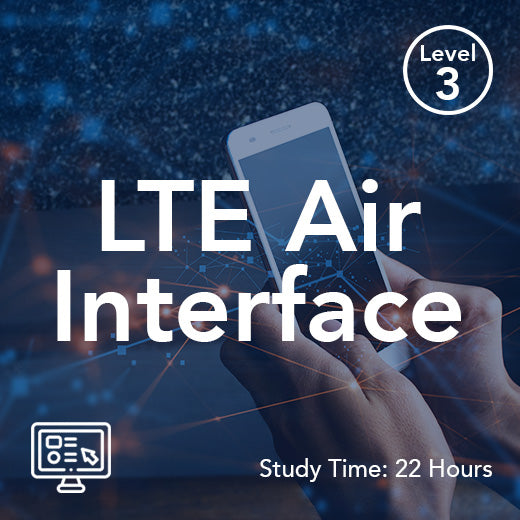
LTE Air Interface (On-Demand)
Our LTE Air Interface Training Course is designed to provide a comprehensive understanding of the air interface for LTE radio access. This course covers OFDMA principles, access and non-access stratum protocols, channel structures, connectivity and mobility management procedures, as well as radio link control functions. Engineers involved in equipment design, operation, optimization, or monitoring of the LTE radio link will benefit greatly from this training. Participants are expected to have an engineering background with some knowledge of digital radio systems and general radio principles and techniques. A basic understanding of LTE and experience with 2G or 3G systems would also be beneficial. Topics covered in the course include LTE system architecture, E-UTRAN architecture and interfaces, OFDMA/SC-FDMA basic principles, MIMO concepts and implementation, physical layer structures, access and non-access stratum protocols, and more. Enhance your knowledge and skills in LTE radio access and stay ahead in the rapidly evolving telecommunications industry. This self-paced on-demand distance learning course features illustrated course books, videos, tests and full tutor support. Who would benefit Engineers involved with equipment design, operation, optimization or monitoring of the LTE radio link. Prerequisites An engineering background with some knowledge of digital radio systems and general radio principles and techniques is assumed. A basic understanding of LTE and experience of 2G or 3G systems would be beneficial. Topic Areas Include LTE system architecture E-UTRAN architecture and interfaces OFDMA/SC-FDMA basic principles Defining orthogonality OFDMA features and benefits The Fourier transform OFDMA/SC-FDMA transmitter and receiver chains Modulation and coding, MIMO and the Cyclic Prefix MIMO concepts and implementation Physical layer structures Access and non-access stratum protocols Logical, Transport and Physical channels RRC, PDCP, MAC and RLC functions Resource allocation and scheduling strategies LTE-Advanced concepts Lower layer procedures Connection establishment Radio resource management procedures
£950.00
-
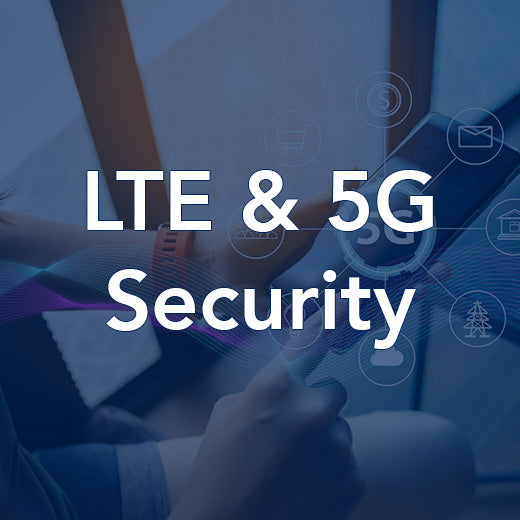
LTE and 5G Security
LTE and 5G systems are becoming increasingly essential in our daily lives, serving as the backbone for future communications and connected devices. As these technologies continue to evolve, the need for robust security measures becomes paramount. The LTE and 5G Security Training Course offered by Wray Castle provides a comprehensive overview of the security environment within LTE and 5G networks, covering key topics such as LTE Authentication and Key Agreement, security procedures, and 5G security architectures. Designed for engineers, managers, and other professionals looking to gain a technical understanding of LTE and 5G network security, this course delves into critical areas such as Access and Core Network security, 5G key derivation, and authentication procedures. Whether you are directly involved in the telecommunications industry or simply want to enhance your knowledge of cellular network security protocols, this course offers valuable insights into the evolving landscape of mobile security. By enrolling in this course, participants will gain a solid foundation in LTE and 5G security, equipping them with the knowledge and skills needed to navigate the complexities of modern mobile networks. Whether you are a seasoned telecom professional or new to the field, this training programme will provide you with the tools to stay ahead in an increasingly interconnected world. Who would benefit This course is designed for engineers, managers and other personnel who have a need to acquire a technical overview of the security environment employed within LTE and 5G networks. It will also be of benefit to those in the wider technical community who have a need to understand the security protocols employed by cellular networks. Prerequisites Attendance on, or equivalent knowledge, LTE Engineering or 5G Engineering would be useful. Alternatively, experience working in this area of telecoms. Topic Areas Include LTE Security Architecture Authentication and Key Agreement Evolution to 5G 5G Non-Standalone Mode Security 5G Standalone Mode Security Also available as a Self-Study Online Learning Programme, learn more.
POA: Private Course
-
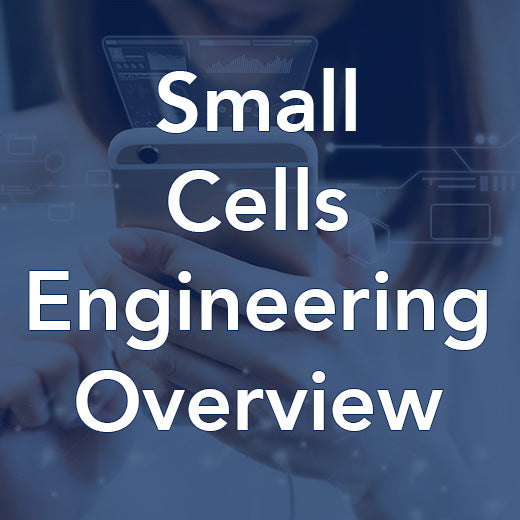
Small Cells Engineering Overview
This course provides a detailed overview of the technologies and techniques employed by Small Cell deployments. It describes the drivers for small cells in a heterogeneous network and identifies the various interfaces, protocols, security functions and network architectures. The features of Self Organising Networks (SON) are described and small cell backhaul techniques are explored. The course concludes with an overview of the future evolution of small cell technologies. This 2-day Small Cells Engineering Overview training course offered by Wray Castle provides a comprehensive understanding of the technologies and techniques used in Small Cell deployments. The course covers the drivers for small cells in a heterogeneous network, various interfaces, protocols, security functions, and network architectures. Participants will also learn about Self Organising Networks (SON), small cell backhaul techniques, and the future evolution of small cell technologies. Ideal for engineering and technical management professionals seeking a technical overview of protocols, architectures, standards, and configuration considerations related to small cell technologies, this course does not require prior cellular telecoms experience. Topics covered include Mobile Network Generations and Evolution, Small Cell Applications, SON Functions, Small Cell Backhaul Requirements, Security Techniques, and LTE-Advanced Small Cells, among others. Enroll in this live online training course consisting of 4 sessions from 0900-1230 to enhance your knowledge and skills in Small Cell technologies. Stay ahead in the rapidly evolving telecom industry with Wray Castle's expert-led training sessions. Who would benefit This course is suitable for engineering and technical management staff who require a technical overview of the protocols, architectures, standards and configuration considerations related to small cell technologies. Prerequisites Attendance on this course assumes basic cellular telecoms experience but this is not a necessity. Topic Areas Include Mobile Network Generations and Evolution Small Cells Definition The Small Cells Forum Small Cell Applications Associated Technologies and Developments Small Cell Network Architectures Heterogeneous Networks 3G HNB, 4G HeNB Architecture Closed Subscriber Groups Small Cell network architecture, components and interfaces Small cells in the enterprise SON (Self Organizing Networks) Small Cell SON Functions Automatic small cell initialization and configuration Small Cell Backhaul Requirements Wireline and Wireless Backhaul Solutions Broadband-based Backhaul Carrier Ethernet Security, Synchronization, QoS and Reliability Techniques Technology Roadmap for Small Cells LTE-Advanced Small Cells Interworking with Wi-Fi Future developments
POA: Private Course
-
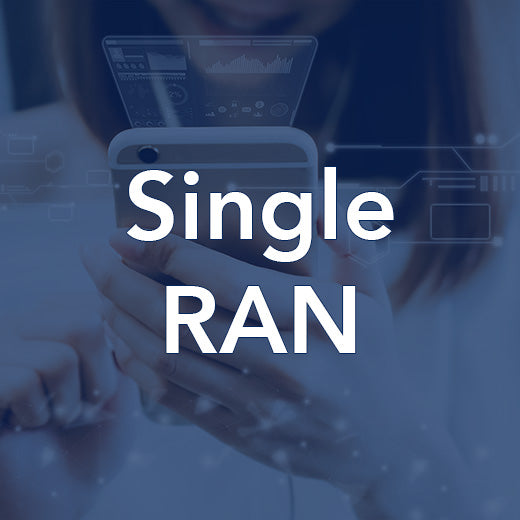
Single RAN
The advent of technologies such as SDR (Software Defined Radio) and packet-based backhaul have enabled vendors and operators to develop ‘Single RAN’ concepts in which MSR (Multi-Standard Radio) base stations are capable of managing 2G, 3G and even 4G cells from within a single base station unit. Shared IP-based backhaul via an Ethernet packet network further allows for the traditional multi-RAN concept to be abandoned as Single RAN architectures begin to be deployed. This course provides a detailed overview of the Single RAN concept, of the technologies and techniques that enable it and of the architectures and deployment options that have made it a reality. Our Single RAN Training Course is designed for engineers, managers, and other personnel who want to gain a technical understanding of the Single RAN concept and the technologies that enable it. This course covers topics such as defining the Single RAN, potential benefits and dangers of implementation, MSR base stations, software-defined radio, multi-standard band sharing, and more. Participants will also learn about backhaul networks and architectures for Single RAN, multi-RAT operation, flexible core network connectivity, and network area coordination. By taking this course, you will acquire the knowledge and skills needed to understand the Single RAN architecture and deployment options that have made it a reality. Whether you are new to the telecommunications industry or looking to enhance your existing knowledge, this training course will provide you with a comprehensive overview of Single RAN concepts and technologies. Don't miss this opportunity to stay ahead in the rapidly evolving world of telecommunications. Sign up for our Single RAN Training Course today and take your career to the next level. Who would benefit This course is designed for engineers, managers and other personnel who have a need to acquire a technical overview of the Single RAN concept and of the technologies and techniques that enable it. Prerequisites An understanding of 2G, 3G and/or 4G access network architectures and technologies would be an advantage as would a basic knowledge of IP. Topic Areas Include Defining the single RAN Potential benefits and dangers of single RAN implementation MSR base stations Software defined radio Multi-standard band sharing OBSAI and CPRI Localized versus distributed cell sites MSR base Station sharing Potential RF issues Single RAN architecture Backhaul networks and architectures for single RAN Multi-RAT operation Flexible core network connectivity Network area coordination RSFP index and idle mode mobility Connected mode mobility IP flow mobility Multi RAN architecture Single RAN architecture Single RAN implementation example
POA: Private Course
-
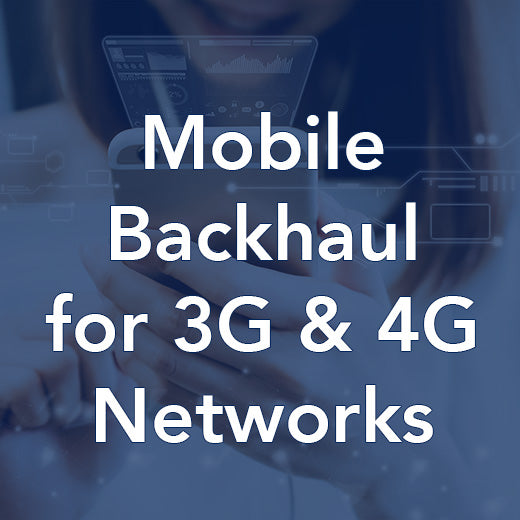
Mobile Backhaul for 3G and 4G Networks
Our 2-day Mobile Backhaul for 3G and 4G Networks training course offers a comprehensive overview of the technologies essential for supporting the backhaul requirements of evolved 3G HSPA and next-generation 4G LTE access networks. Participants will delve into discussions on backhaul architecture, Carrier Ethernet, MPLS, fibre-optic transmission, packet-based microwave, and other high-capacity backhaul technologies. This course is ideal for engineering and technical management professionals involved in the commissioning, design, deployment, or operation of mobile backhaul networks. Participants will gain insights into backhaul concepts, transport network layered architectures, RAN architectures and requirements, industry forums, and various backhaul options at layers 1, 2, and 3. Topics covered include Ethernet, VLANs, Q-in-Q VLAN stacking, MPLS, IP RAN in HSPA and LTE, synchronization, redundancy, security options, NGMN models, and VLAN traffic forwarding examples for Ethernet-based RANs. Prior knowledge of mobile network architecture and legacy backhaul technologies like TDM or ATM would be beneficial for this course. Join us for a deep dive into mobile backhaul technologies and enhance your expertise in supporting advanced mobile networks. Who would benefit This course is suitable for engineering and technical management staff who are involved in the commissioning, design, deployment or operation of mobile backhaul networks. Prerequisites An understanding of mobile network architecture and operation would be beneficial as would an appreciation of legacy backhaul technologies such as TDM or ATM. Topic Areas Include What is backhaul? Transport network layered architectures Radio Access Network (RAN) architectures and requirements Industry forums Layer 1 backhaul options Backhaul architecture models Next generation SDH, OTN and packet-based microwave Layer 2 backhaul options Ethernet and 802.1Q VLANs Q-in-Q VLAN stacking Carrier Ethernet MPLS and pseudowires Layer 3 backhaul options IP RAN in HSPA and LTE Synchronization (NTPv4, IEEE1588v2/PTP, Sync-E) Redundancy (MSTP, G.8031/8032) Security options (IPsec, Security Gateway) Next Generation Mobile Network (NGMN) models VLAN traffic forwarding examples for Ethernet-based RANs
POA: Private Course
-
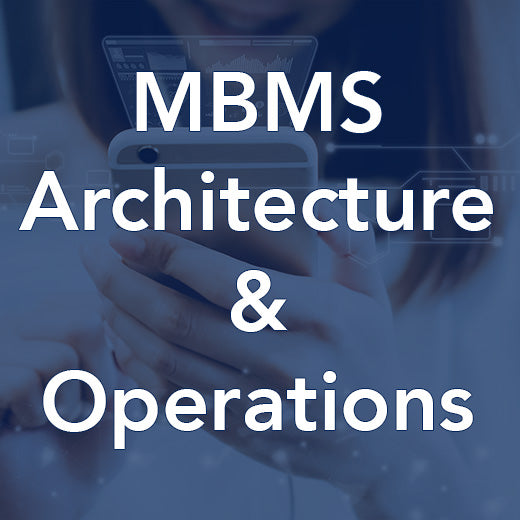
MBMS Architecture and Operation
The MBMS Architecture and Operation training course to gain a comprehensive understanding of the architecture and operation of Multimedia Broadcast Multicast Service (MBMS) technology. This course is designed to provide you with in-depth knowledge of MBMS system architecture, eMBMS air interface, and MBMS operation. Our training course covers essential topics such as introduction to MBMS system architecture, eMBMS air interface, and MBMS operation. You will learn about the technical aspects of MBMS technology, including how it enables efficient delivery of multimedia content to multiple users simultaneously. By the end of the course, you will have a solid understanding of MBMS technology and be equipped with the knowledge to implement it effectively in your projects. Don't miss this opportunity to expand your expertise in MBMS architecture and operation with our comprehensive training course. Course Contents Introduction and System Architecture eMBMS Air Interface MBMS Operation
POA: Private Course
-
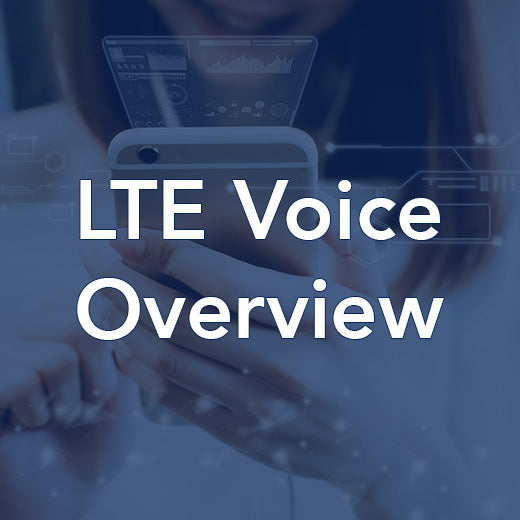
LTE Voice Overview
LTE Voice Overview Training Course provides a comprehensive technical introduction to LTE voice methods. This course is designed for engineering and technical management professionals who need a clear understanding of the options available for delivering voice services over LTE networks. Participants will gain insight into the architecture, protocols, and codecs for Voice over LTE (VoLTE), as well as learn about CS fallback, IMS, SRVCC, and other key topics related to LTE voice technology. Prerequisites for attending this course include prior completion of the LTE Engineering Overview course or equivalent basic knowledge of LTE. However, a recap of fundamental LTE concepts and architecture is provided at the beginning of the training session. By the end of the 1-day course, participants will have a solid understanding of LTE voice technologies and procedures, including power-on, registration, call setup, SMS, emergency calls, and Voice over Wi-Fi. Enhance your expertise in LTE voice with this informative and practical training course. Who would benefit This course is suitable for engineering and technical management staff who require a concise introduction to the options that exist in LTE for the delivery of voice services. Prerequisites Attendance on this course assumes previous attendance on the LTE Engineering Overview course (LT3600) or equivalent basic LTE knowledge (although a recap of basic LTE architecture and concepts is provided at the start of the course). Topic Areas Include Technical overview of LTE Introduction to the options for LTE voice Architecture and operation of CS fallback Overview of the IMS System architecture, protocols and codecs for Voice over LTE (VoLTE) VoLTE procedures for power-on, registration and call setup Single Radio Voice Call Continuity (SRVCC) Additional topics such as SMS, emergency calls and Voice over Wi-Fi
POA: Private Course
-
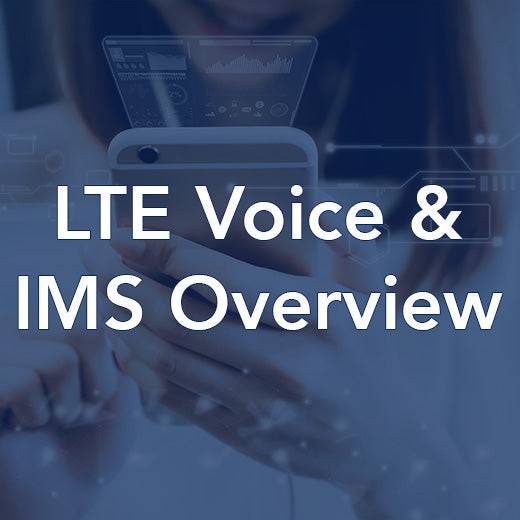
LTE Voice and IMS Overview
Our LTE Voice and IMS Overview training course is designed to provide a comprehensive technical understanding of the IP Multimedia Subsystem (IMS) and how it is utilized for delivering VoIP services over LTE networks. This 3-day course is ideal for engineering and technical management professionals seeking in-depth knowledge of LTE voice delivery and real-time traffic handling. Participants will gain insights into various topics including LTE technical overview, SIP and SDP protocols, IMS architecture and operation, VoLTE system architecture, protocols, services, and codecs, as well as emergency call procedures and Voice over Wi-Fi. Prerequisites for this course include prior attendance of our LTE Engineering Overview course or equivalent basic LTE knowledge, along with a working understanding of IP. By enrolling in our LTE Voice and IMS Overview training, participants will enhance their expertise in LTE voice delivery mechanisms and gain valuable insights into the operation of the IP Multimedia Subsystem. Stay ahead in the rapidly evolving telecommunications industry with our specialized training designed to equip you with the necessary skills and knowledge for successful implementation of VoIP services over LTE networks. Who would benefit This course is suitable for engineering and technical management staff who require a technical description of the options that exist in LTE and the IP multimedia subsystem for delivering voice and other real-time traffic types, that would traditionally have been carried by Circuit-Switched (CS) technologies. Prerequisites Attendance on this course assumes previous attendance on the LTE Engineering Overview course (LT3600) or equivalent basic LTE knowledge (although a recap of basic LTE architecture and concepts is provided at the start of the course) and also assumes a working knowledge of IP. Topic Areas Include Technical overview of LTE Introduction to the options for LTE voice Session Initiation Protocol (SIP) Session Description Protocol (SDP) Architecture and operation of the IP Multimedia Subsystem (IMS) Control and user plane functions of the IMS Service delivery in the IMS System architecture for Voice over LTE (VoLTE) VoLTE protocols, services and codecs VoLTE power-on and registration procedures VoLTE call setup procedures Access domain selection Single Radio Voice Call Continuity (SRVCC) Delivery of SMS messages over the IMS VoLTE emergency calls Voice over Wi-Fi
POA: Private Course
-
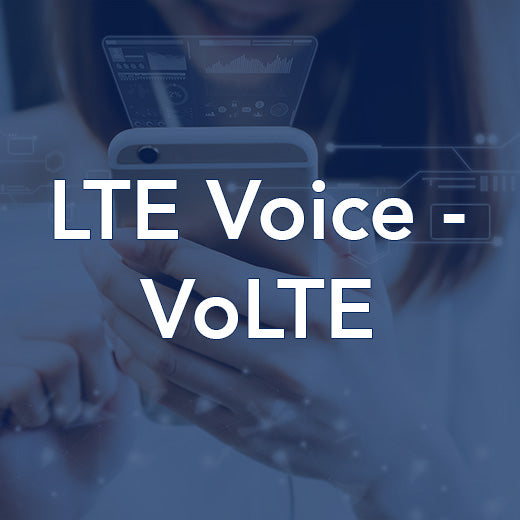
LTE Voice - VoLTE
Our LTE Voice (VoLTE) training course is designed to provide a comprehensive technical understanding of how VoIP services are delivered using LTE and the IP Multimedia Subsystem. This course is ideal for engineering and technical management professionals looking to gain in-depth knowledge of the options available in LTE for delivering voice and real-time traffic through VoIP. Topics covered in this course include a technical overview of LTE, introduction to LTE voice options, IP Multimedia Subsystem (IMS) overview, Voice over LTE (VoLTE) system architecture, VoLTE protocols, services, and codecs, VoLTE call setup procedures, SRVCC, SMS delivery over IMS, VoLTE emergency calls, and Voice over Wi-Fi. Whether you're new to LTE or looking to enhance your existing knowledge, our 2-day course provide a detailed exploration of VoLTE technology. Join us to expand your expertise and stay ahead in the rapidly evolving world of telecommunications. Who would benefit This course is suitable for engineering and technical management staff who require a technical description of the options that exist in LTE for delivering voice and other real-time traffic types by means of VoIP. Prerequisites Attendance on this course assumes previous attendance on the LTE Engineering Overview course (LT3600) or equivalent basic LTE knowledge (although a recap of basic LTE architecture and concepts is provided at the start of the course) and also assumes a working knowledge of IP. Topic Areas Include Technical overview of LTE Introduction to the options for LTE voice Technical overview of the IP Multimedia Subsystem (IMS) System architecture for Voice over LTE (VoLTE) VoLTE protocols, services and codecs VoLTE power-on and registration procedures VoLTE call setup procedures Access domain selection Single Radio Voice Call Continuity (SRVCC) Delivery of SMS messages over the IMS VoLTE emergency calls Voice over Wi-Fi Also available as a Self-Study Online Learning Programme, learn more.
POA: Private Course
-
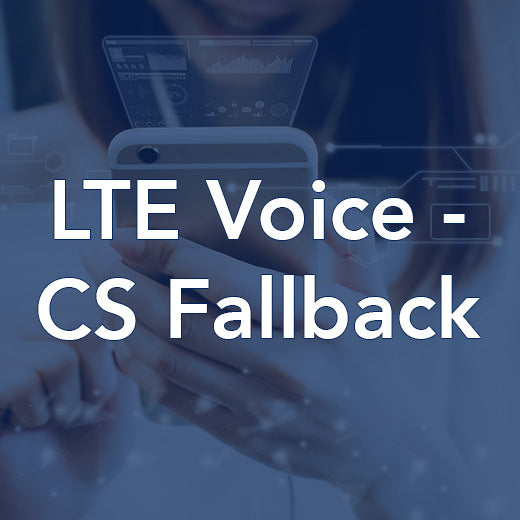
LTE Voice - CS Fallback
This LTE Voice CS Fallback training course is designed to provide a comprehensive technical understanding of how CS fallback is used to deliver LTE voice services. Participants will gain insights into the technical aspects of CS fallback architecture, SGs Application Protocol (SGsAP), combined attach procedures, call setup options, roaming retry, SMS message delivery, and more. Ideal for engineering and technical management professionals seeking to deepen their knowledge of LTE voice delivery options, this course is a valuable resource for those looking to enhance their skills in this specialized area. Prior attendance on the LTE Engineering Overview course (LT3600) or equivalent basic LTE knowledge is recommended, along with a working knowledge of IP. Join us for this 1-day course where industry experts will guide you through the intricacies of LTE voice CS fallback. Enhance your technical expertise and stay ahead in the rapidly evolving field of LTE technology with this insightful and practical training opportunity. Who would benefit This course is suitable for engineering and technical management staff who require a technical description of the options that exist in LTE for delivering voice and other real-time traffic types by means of CS fallback. Prerequisites Attendance on this course assumes previous attendance on the LTE Engineering Overview course (LT3600) or equivalent basic LTE knowledge (although a recap of basic LTE architecture and concepts is provided at the start of the course) and also assumes a working knowledge of IP. Topic Areas Include Technical overview of LTE Introduction to the options for LTE voice CS fallback architecture SGs Application Protocol (SGsAP) Combined attach procedure Alignment of tracking and location areas CS fallback call setup options Mobile-originated and mobile-terminated call setup procedures Roaming retry and roaming forwarding Delivery of SMS messages over the SGs interface
POA: Private Course
-
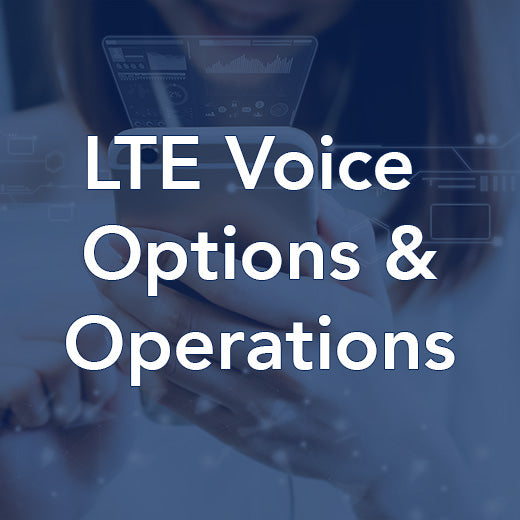
LTE Voice Options and Operations
Our LTE Voice Options and Operations Training Course (Course Code: LT1002) is designed to provide a comprehensive technical understanding of the methods available for delivering voice services over LTE networks. This 3-day course is ideal for engineering and technical management professionals seeking in-depth knowledge of LTE voice delivery and real-time traffic handling. Participants will gain insight into LTE voice options, CS fallback architecture, IMS, VoLTE protocols, SRVCC, voice over Wi-Fi, and more. Prerequisites for this course include prior attendance at the LTE Engineering Overview course (LT3600) or equivalent basic LTE knowledge, as well as a working understanding of IP. Our expert instructors will provide a recap of basic LTE concepts at the beginning of the course to ensure all participants are on the same page. By the end of the training, attendees will have a solid grasp of LTE voice delivery methods and the technical intricacies involved in offering voice services over LTE networks. Join us for our LTE Voice Options and Operations Training Course to enhance your technical skills and stay ahead in the rapidly evolving world of telecommunications. Gain valuable insights into the latest advancements in LTE voice technology and learn how to effectively implement voice services over LTE networks. Don't miss this opportunity to expand your knowledge and expertise in LTE voice operations. Who would benefit This course is suitable for engineering and technical management staff who require a technical description of the options that exist in LTE for delivering voice and other real-time traffic types, that would traditionally have been carried by Circuit Switched (CS) technologies. Prerequisites Attendance on this course assumes previous attendance on the LTE Engineering Overview course (LT3600) or equivalent basic LTE knowledge (although a recap of basic LTE architecture and concepts is provided at the start of the course) and also assumes a working knowledge of IP. Topic Areas Include Technical overview of LTE Introduction to the options for LTE voice CS fallback architecture and protocols CS fallback attach and call setup procedures Technical overview of the IMS System architecture for Voice over LTE (VoLTE) VoLTE protocols, services and codecs VoLTE power-on and registration procedures VoLTE call setup procedures Access domain selection Single Radio Voice Call Continuity (SRVCC) Delivery of SMS messages over the IMS VoLTE emergency calls Voice over Wi-Fi [Optional] Voice over LTE by Generic Access (VoLGA)
POA: Private Course
-
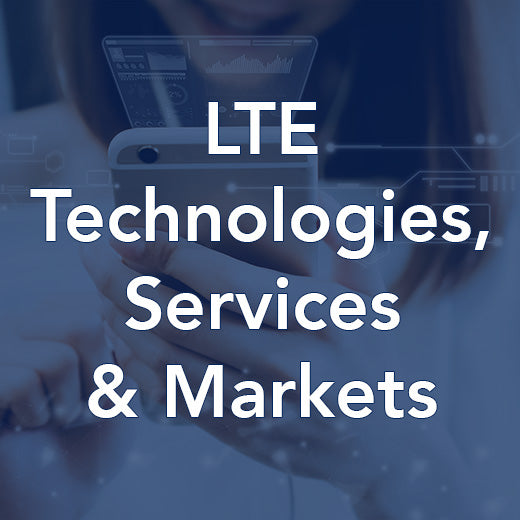
LTE Technologies, Services and Markets
LTE technologies are at the forefront of the telecommunications industry, offering faster speeds and more reliable connections for both mobile and fixed services. Our LTE Technologies, Services, and Markets training course (Course Code: LT3601) provides a comprehensive overview of the Evolved Packet System (EPS) that makes up the LTE system. This course is designed for non-technical professionals who are new to or already working in the telecommunications sector, offering a non-technical introduction to LTE and its place in the evolving telecom market. With 2 live online sessions spread over 1 day, participants will gain an understanding of LTE services, market segments, target users, key features, network architecture, and technology roadmaps toward LTE. No technical knowledge is assumed, making this course accessible to individuals with varying levels of experience in the industry. By exploring the applications and synergies of LTE technology, participants will be equipped with the knowledge needed to navigate the dynamic landscape of LTE services and markets. Join us for this informative training course to stay ahead in the telecommunications industry and gain insights into the advancements and opportunities offered by LTE technologies. Whether you are looking to expand your knowledge or enhance your skill set, this course will provide you with valuable insights into the world of LTE and its impact on the telecommunications sector. Who would benefit This course is intended for non-technical professionals either new to, or already working in, the mobile or fixed telecommunications sector. Prerequisites No technical knowledge is assumed but some familiarity with the telecommunications industry would be beneficial. Topic Areas Include The evolving mobile telecommunications market LTE services and service aims LTE market segments LTE target users Key features of LTE LTE network terminology E-UTRAN architecture Evolved Packet Core (EPC) architecture Why all-IP? LTE for fixed and mobile services Technology roadmaps toward LTE LTE timescales Applications for LTE LTE technology synergies
POA: Private Course
-
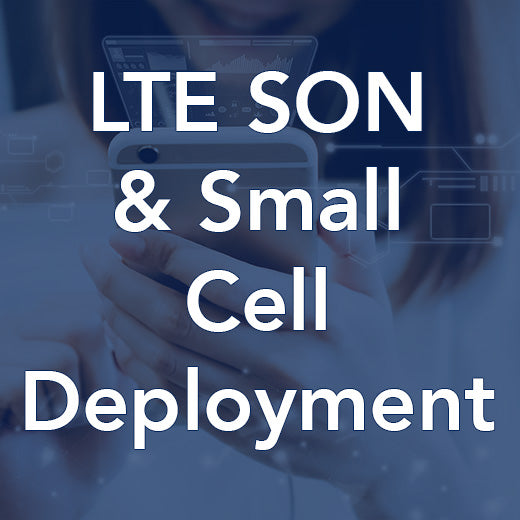
LTE SON and Small Cell Deployment
LTE, SON, and Small Cell Deployment Training Course is a comprehensive program designed to explore the intricacies of Self-Organizing Networks (SON) and the deployment of small cells and femtocells. This course delves into key features and procedures that enable self-configuration within a SON, as well as addressing issues related to femtocell deployment such as interference management and control techniques. Ideal for professionals working in planning-related roles for network operators or as consultants, this course assumes existing knowledge of cell planning principles in a mobile environment. Participants will benefit from a deep dive into topics like SON drivers, automatic neighbor relation (ANR), mobility robustness optimization, and deployment configurations. By the end of this 1-day course consisting of 2 live online sessions, attendees will have a solid understanding of the complexities and best practices surrounding LTE, SON, and small cell deployment. Enhance your expertise in small cell deployment and stay ahead in the ever-evolving telecommunications industry with our LTE, SON, and Small Cell Deployment Training Course. Gain valuable insights into self-configuring networks, interference management, and deployment configurations to optimize network performance and efficiency. Join us for 2 live online sessions and deepen your knowledge of SON drivers, automatic PCI configuration, and mobility load balancing. Don't miss this opportunity to advance your skills and propel your career in mobile network planning and deployment. Who would benefit This course would benefit those with a keen interest in the issues surrounding the deployment of small cells and femtocells in particular. This might include those working in planning-related roles for network operators or as individual consultants. Prerequisites This course assumes existing knowledge of cell planning principles in a mobile environment. Topic Areas Include SON – drivers Self-configuration Automatic Neighbour Relation (ANR) Automatic PCI configuration Inter-Cell interference Co-ordination (ISIC) Mobility robustness optimization Mobility load balancing Energy saving Deployment configurations Control of downlink interference
POA: Private Course
-
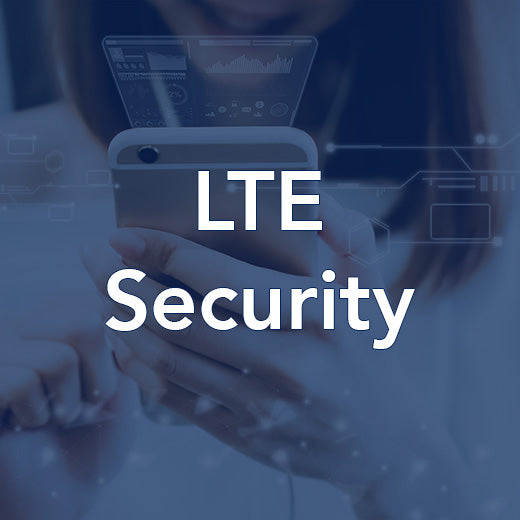
LTE Security
Course Code: LT1303 Course Summary This course provides a detailed overview of the security environment developed for LTE networks, including the LTE Authentication and Key Agreement (AKA) procedures and the provisions for Non-Access Stratum, Access Stratum, Access Network and Core Network security. Who would benefit This course is designed for engineers, managers and other personnel who have a need to acquire a technical overview of the security environment employed within LTE networks. It will also be of benefit to those in the wider technical community who have a need to understand the security protocols employed by cellular networks. Prerequisites Attendance on this course assumes previous attendance on the LTE Engineering Overview course (LT3600) or equivalent basic LTE knowledge. An understanding of legacy 2G and 3G security procedures would be an advantage as would a basic understanding of LTE network architecture and functionality. Topic Areas Include Security threats and mitigations 3GPP security strata and the LTE security architecture Non-Access Stratum, Access Stratum, Access Network and Core Network Security Overall AKA process Security contexts Subscriber and UE identifiers Authentication process, vectors and algorithms Key agreement procedures AKA keys and algorithms Key hierarchy, key sets and key set identifiers Key derivation functions KeNB chaining and the NH (Next Hop) key EEA and EIA security algorithms Security procedures
POA: Private Course
-
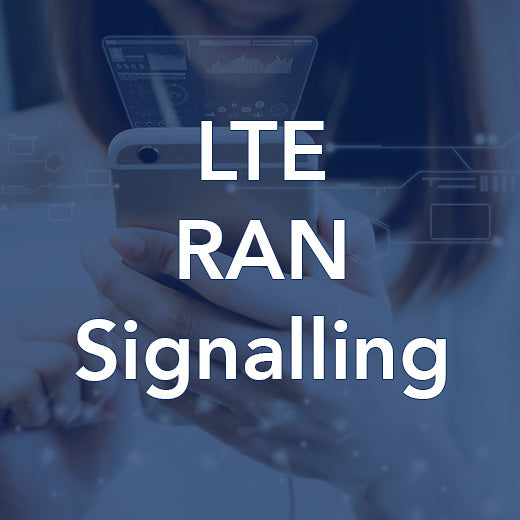
LTE RAN Signalling
Our LTE RAN Signalling Training Course is designed for engineers involved in equipment design, operation, optimization, or monitoring of the LTE Radio Access Network. This 1-day course provides participants with a comprehensive understanding of LTE signalling protocols and interfaces. Participants are expected to have familiarity with LTE and the LTE RAN, which can be gained from attending our LTE Engineering Overview (LT3600) course. Experience with 2G or 3G air interface signalling systems would also be beneficial. Please note that this course is not suitable for those who have attended the LTE RAN course (LT3603) as it covers similar signalling topics. The course covers essential topics such as LTE Signalling Protocols and Interfaces, S1 Interface Messages and Procedures, and X2 Interface Messages and Procedures. By the end of the training, participants will have a solid foundation in LTE RAN signalling, enabling them to effectively design, operate, optimize, and monitor LTE networks. Who Would Benefit Engineers involved with equipment design, operation, optimization or monitoring of the LTE Radio Access Network. Prerequisites Familiarity with LTE and the LTE RAN is assumed and can be gained from attending the LTE Engineering Overview (LT3600) course. Experience of 2G or 3G air interface signalling systems would be beneficial. This course is not suitable for those who have attended the LTE RAN course (LT3603) as it covers similar signalling topics. Contents LTE Signalling Protocols and Interfaces S1 Interface Messages and Procedures X2 Interface Messages and Procedures
POA: Private Course
-
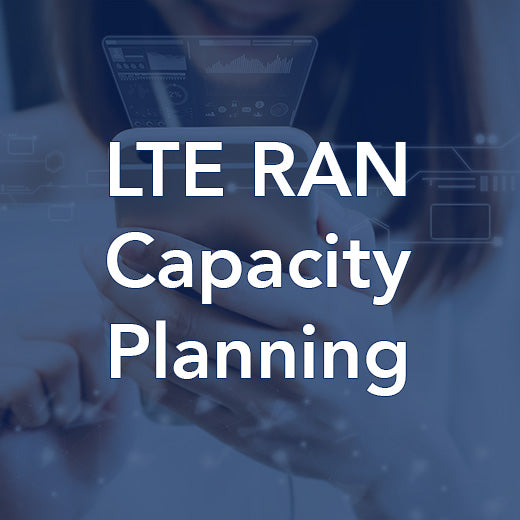
LTE RAN Capacity Planning
Our LTE Security Training Course offers a comprehensive overview of the security measures implemented in LTE networks. This course covers topics such as LTE Authentication and Key Agreement (AKA) procedures, Non-Access Stratum, Access Stratum, Access Network, and Core Network security. Engineers, managers, and other professionals looking to gain a technical understanding of LTE network security will benefit from this course. It is also suitable for individuals in the broader technical community who need to grasp the security protocols used in cellular networks. Participants are expected to have prior knowledge of LTE networks, either through attending our LTE Engineering Overview course (LT3600) or possessing equivalent basic LTE knowledge. Familiarity with legacy 2G and 3G security procedures, as well as a basic understanding of LTE network architecture and functionality, would be advantageous. Join us for this training to delve into security threats and mitigations, 3GPP security strata, authentication processes, key agreement procedures, security algorithms, and more. Upgrade your skills and stay ahead in the dynamic world of LTE security with our expert-led training. Who would benefit This course is designed for engineers working for network operators in the planning and implementation of RANs. Prerequisites This course assumes an engineering background, as well as a good understanding of LTE. Topic Areas Include E-UTRAN architecture and protocols EPS bearers and QoS Subscriber traffic profiling Signalling event traffic modelling Signalling events and event dimensioning RAN synchronization options and overheads Dimensioning O&M Air interface structure and bandwidth options Maximum theoretical throughput estimations Dimensioning the RAN for voice traffic CQI and user plane traffic dimensioning
POA: Private Course
-
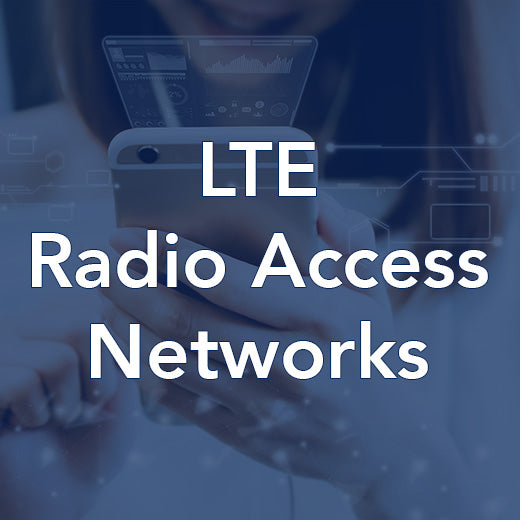
LTE Radio Access Network
Our LTE Radio Access Network training course provides a comprehensive technical overview of the Radio Access Network (RAN) for LTE systems. This course covers topics such as E-UTRAN architecture, configuration options, security functions, core network interactions, and bearer establishment procedures. Engineers involved in transmission, architecture design, optimization, network management, or monitoring of the LTE RAN will benefit from this course. Participants are expected to have an engineering background with some knowledge of telecommunications technologies and protocols. Experience with 2G or 3G systems would also be beneficial. The course includes in-depth discussions on E-UTRAN architecture and interfaces, frequency bands and channels, cell structures, handover management, security functions, and more. Practical exercises are included to enhance learning and understanding of the material. Join us to gain valuable insights into LTE RAN technologies and enhance your skills in managing and optimizing LTE networks. Don't miss this opportunity to expand your knowledge and expertise in the field of LTE radio access networks. Who would benefit Engineers involved with transmission or architecture design, optimization, network management or monitoring of the LTE RAN. Prerequisites An engineering background with some knowledge of telecommunications technologies and protocols is assumed. Experience of 2G or 3G systems would be beneficial. Topic Areas Include E-UTRAN architecture and interfaces E-UTRAN frequency bands and channels Cell structures, hierarchies and sizes LTE cell site configurations Tracking Areas (TA) and TA list management Handover management E-UTRAN Self Optimizing Network (SON) functions Access stratum and access network security Interaction between eNB and MME/S-GW devices Logical and physical connectivity to EPC nodes LTE E-UTRAN and small cell deployments Relay nodes, LIPA, SIPTO and LPP S1AP (S1 Application Protocol) message structures and operation X2AP (X2 Application Protocol) message structures and operation Connection establishment Overview of interaction between E-UTRAN protocols during basic LTE procedures Includes exercises.
POA: Private Course
-
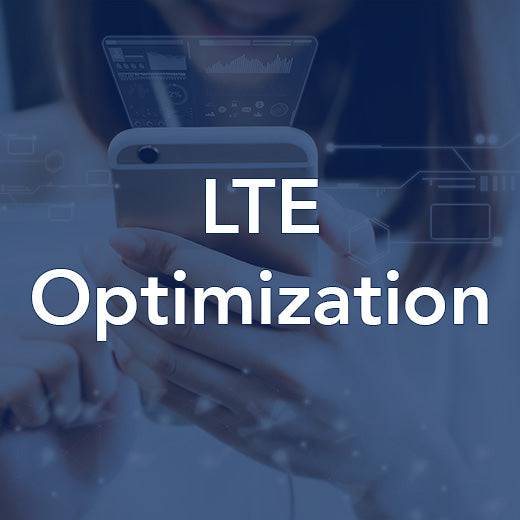
LTE Optimization
Course Code: LT1001 Course Summary An introduction to the principles and techniques that relate to the parameters available in the LTE Radio Access Network (RAN). This includes cell configuration, idle mode parameters and connected mode parameters. All elements are reinforced through classroom exercises and tool demonstrations. Who would benefit This course is intended for experienced radio access optimizers and those involved with device development or functionality testing for LTE-based networks. Prerequisites This course assumes an engineering background with some knowledge of digital radio systems in general and good knowledge of the LTE air interface structure and operation. Experience of parameter tuning for 2G or 3G systems would be useful. Topic Areas Include Radio spectrum and radio channel organization Key LTE radio metrics Interpreting drive survey results Identifying key air interface parameters Verifying settings for radio parameters Performance of a single frequency network Network access parameters Cell selection and reselections Inter-technology cell reselections Prioritized cell reselections Connected mode measurements Triggered measurement reports LTE handovers Analysing handovers Inter-technology handovers Management of discontinuous reception Includes exercises.
POA: Private Course
-
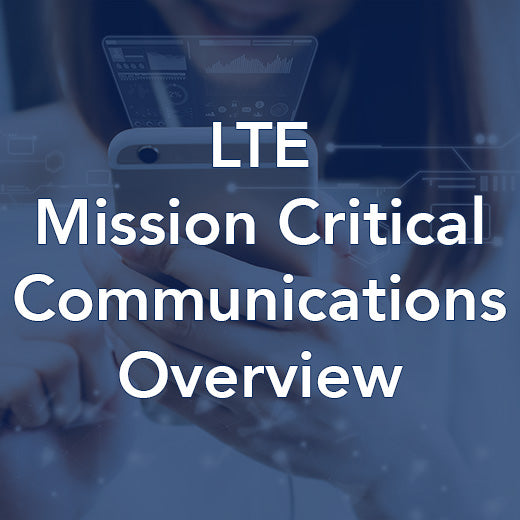
LTE Mission Critical Communications Overview
LTE Mission Critical Communications Overview Training Course is designed for members of the emergency services, network operators, and individuals seeking a comprehensive understanding of how LTE technology can support Mission Critical Communications. This course is ideal for those with a technical background or a foundation level of understanding in the field of telecommunications. Participants will delve into topics such as the requirements of a Mission Critical Network, an introduction to LTE, the LTE Radio Interface, Mission Critical Push to Talk (MCPTT), and Proximity Services (ProSe). By the end of the course, attendees will have a solid grasp of how LTE technology can enhance and support critical communications in various scenarios. Join us for this informative and practical training course to gain valuable insights into LTE Mission Critical Communications and how it can revolutionize communication systems for emergency services and network operators. Don't miss this opportunity to expand your knowledge and skills in this crucial area of telecommunications. Who Would Benefit This course benefits members of the emergency services; network operators and those seeking an overall description of how LTE can support Mission Critical Communications. Prerequisites The course is intended for those with a technical background or foundation level of understanding in telecommunications. Course Contents Requirements of a Mission Critical Network Introduction to LTE The LTE Radio Interface Mission Critical Push to Talk (MCPTT) Proximity Services (ProSe)
£980.00
-
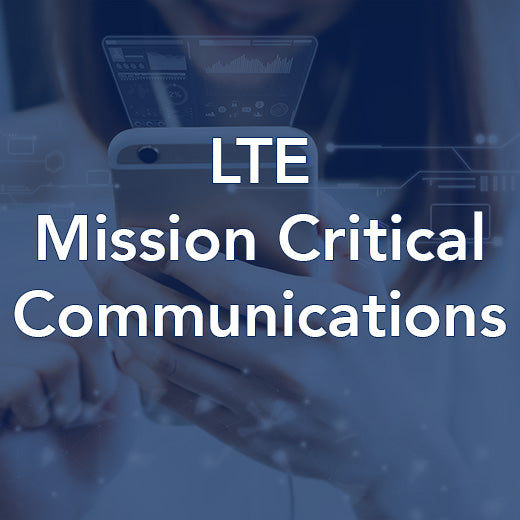
LTE Mission Critical Communications
LTE Mission Critical Communications training course is essential for individuals working with emergency services or government agencies who are looking to familiarize themselves with the technology set to replace LMR systems. This 2-day course covers a range of topics including the requirements of a Mission Critical Network, introduction to LTE, LTE Radio Interface, Multimedia Broadcast Multicast Service, and more. Participants will benefit from gaining a deeper understanding of LTE technology and its applications in mission critical communications. While a basic knowledge of LMR systems is advantageous, a strong familiarity with the requirements of emergency service communications is more important for this course. By the end of the training, attendees will be equipped with the knowledge and skills needed to navigate the transition from LMR to LTE systems effectively. Join us for the LTE Mission Critical Communications training course to stay ahead of the curve in the evolving landscape of emergency communication technologies. Enhance your expertise in LTE, MCPTT, MCVideo, MCData, and more, and be prepared for the future of mission critical communications. Who Would Benefit LTE Mission Critical Communications training course is aimed at those who are working with the emergency services or government agencies wishing to become familiar with the technology planned to replace LMR systems . Prerequisites A basic understanding of LMR systems would be advantageous but familiarity with the requirements of emergency service communications is more important. Course Contents Requirements of a Mission Critical Network Introduction to LTE The LTE Radio Interface Multimedia Broadcast Multicast Service The IP Multimedia Subsystem (IMS) Group Communication System Enablers for LTE (GCSE_LTE) Mission Critical Push to Talk (MCPTT) Mission Critical Video (MCVideo) Mission Critical Data (MCData) LTE and LMR Interworking
POA: Private Course
-
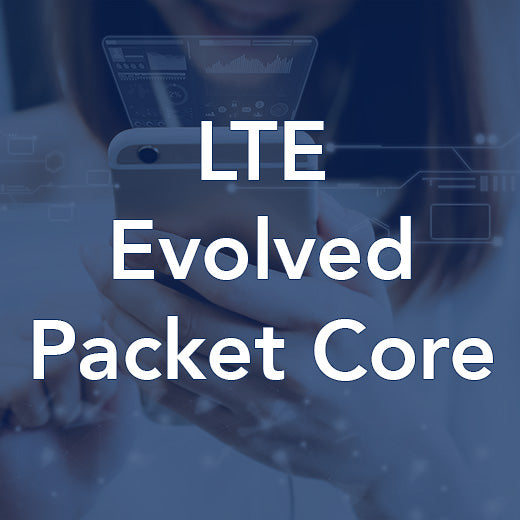
LTE Evolved Packet Core Network
Our LTE Evolved Packet Core Network Training Course is designed to provide a comprehensive technical understanding of the Evolved Packet Core (EPC) for LTE systems. In this course, participants will learn about EPC architecture, interfaces, service provision concepts, application of IP technologies, overall protocol architectures, and optionally, a review of IMS functionality Engineers and other staff involved with switching or transmission architecture, optimization, network management, network testing, or monitoring of the EPC would greatly benefit from this training. Participants are expected to have an engineering background with some knowledge of core network technologies, including IP. Experience with 2G or 3G systems would also be beneficial for a better understanding of the course material. The course covers a wide range of topic areas, including the high-level architecture of LTE, functions of key EPC components like MME, S-GW, PDN-GW, HSS, and PCRF, LTE state diagrams, inter-operation with 2G, 3G, and non-3GPP networks, voice options for LTE, principles of bearers and Quality of Service (QoS), data transport in the EPC, policy and charging control architecture, IETF and 3GPP protocols in the EPC, power-on procedures, UE procedures in idle and connected modes, enhancements in LTE-Advanced, and optionally, an overview of the functions and architecture of the IMS. Who would benefit Engineers and other staff involved with switching or transmission architecture, optimization, network management, network testing or monitoring of the EPC. Prerequisites An engineering background with some knowledge of core network technologies, including IP, is assumed. Experience of 2G or 3G systems would be beneficial. Topic Areas Include High level architecture of LTE Functions of the MME, S-GW, PDN-GW, HSS and PCRF LTE state diagrams Inter-operation with 2G, 3G and non-3GPP networks Voice options for LTE Principles of bearers and Quality of Service (QoS) Data transport in the EPC Policy and charging control architecture IETF protocols in the EPC, including SCTP, DiffServ and Diameter 3GPP protocols in the EPC, including GTP and S1-AP Power-on procedures UE procedures in idle and connected modes Enhancements in LTE-Advanced [Optional] Overview of the functions and architecture of the IMS Also available as a Self-Study Online Learning Programme, learn more.
POA: Private Course
-
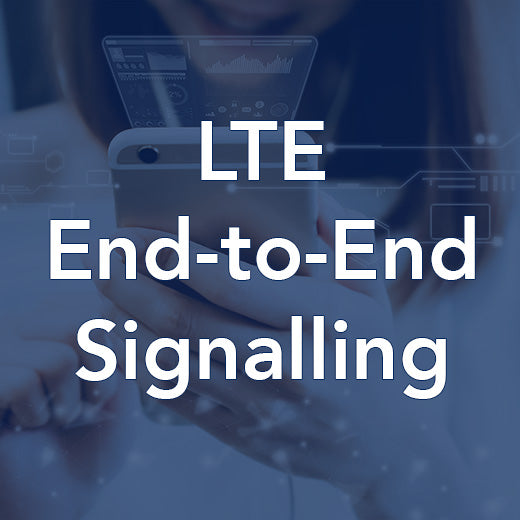
LTE End-to-End Signalling
This course is designed to provide an end-to-end view of the whole set of signalling messages that support some of the most fundamental LTE network operations, such as: initial attach, PDN Connectivity, EPS Bearer setup, bearer resource allocation, handover and detach. Each procedure is presented in terms of the progression of signalling messages exchanged and each message is explored in detail. The course provides details of messages belonging to the following signalling protocols: RRC, NAS, S1AP, X2AP, GTPv2-C and also the Diameter S6a, S13 and Gx applications. Our LTE End-to-End Signalling Training Course (Course Code: LT1301) offers a comprehensive overview of the signalling messages involved in key LTE network operations. From initial attach to handover and detach procedures, participants will gain a deep understanding of the signalling protocols including RRC, NAS, S1AP, X2AP, GTPv2-C, and Diameter S6a, S13, and Gx applications. This course is ideal for engineers, managers, and personnel seeking a technical overview of the complete LTE signalling environment, providing valuable insights into the management of fundamental LTE procedures. Participants in this course will benefit from a detailed exploration of air interface signalling protocols, E-UTRAN signalling protocols, and EPC signalling protocols. Topics covered include initial attach procedures, idle mode procedures, connected mode procedures, handover procedures, and detach procedures. Prerequisites include a basic understanding of LTE network architecture, services, and protocols, which can be acquired through our LTE Engineering Overview and LTE Evolved Packet Core Network (LT3604) courses. An understanding of IP would also be beneficial for participants. Gain the knowledge and skills needed to navigate the complexities of LTE signalling protocols and procedures, and enhance your expertise in managing LTE network operations effectively. Who would benefit This course is designed for engineers, managers and other personnel who have a need to acquire a technical overview of the total LTE signalling environment (not just signalling in one part of the network) and also those that require an end-to-end view of the management of fundamental LTE procedures. Prerequisites A basic understanding of LTE network architecture, services and protocols, which can be gained from attending the LTE Engineering Overview (LT3600) and LTE Evolved Packet Core Network (LT3604) courses. An understanding of IP would be beneficial. Topic Areas Include Air interface signalling protocols E-UTRAN signalling protocols EPC signalling protocols Initial attach procedures Idle mode procedures S1 release Tracking area update procedure Service request procedure with ISR enabled Extended service request for CS fallback Connected mode procedures Connection establishment, modification and release Bearer resource allocation triggering dedicated EPS bearer establishment Bearer resource modification triggering EPS bearer modification PDN connectivity request Handover procedures X2-based handover with direct forwarding S1-based handover with S-GW change with indirect forwarding Inter-System PS handover to UMTS/HSPA without forwarding Detach procedures Also available as a Self-Study Online Learning Programme, learn more.
POA: Private Course
-
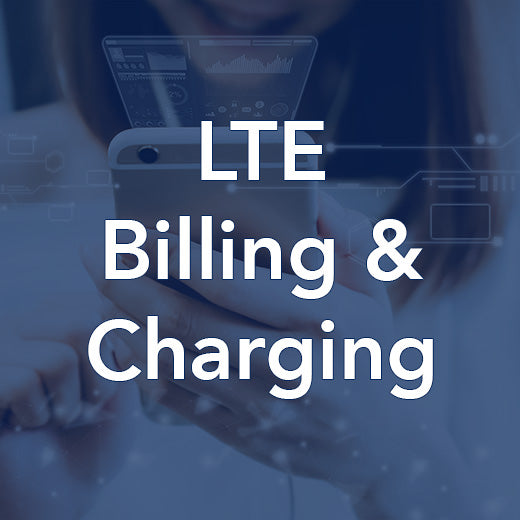
LTE Billing and Charging
Our LTE Billing and Charging Training Course provides a comprehensive technical overview of the billing and charging architecture specifically designed for 4G LTE networks. Participants will gain insights into LTE bearer, traffic flow, and Quality of Service (QoS) concepts, as well as an in-depth understanding of the architecture of both online and offline billing systems. Key nodes, interfaces, and protocols used for transporting billing and charging information will be explored, along with the interactions with the billing system during basic LTE procedures. This course is ideal for engineers, designers, managers, and individuals involved in the development, deployment, or operation of LTE billing and charging systems. Familiarity with the LTE Evolved Packet Core is assumed, and experience with 2G or 3G billing systems would be beneficial. Topics covered include EPS bearer concepts, LTE QoS models, packet flows, deep packet inspection, policy and charging control, flow-based charging, billing architecture, charging data capture points, protocols (Diameter, CAP), interfaces (Gy, Gz, Rf, Ro), charging criteria, CDR formats, CDR generation, and charging interaction with basic LTE procedures. Join us for this informative and practical training session to enhance your knowledge and skills in LTE billing and charging. Who would benefit Engineers, designers, managers and others involved in the development, deployment or operation of LTE billing and charging systems. Prerequisites Familiarity with the LTE Evolved Packet Core is assumed. Experience of 2G or 3G billing systems would be beneficial. Topic Areas Include Review of EPS bearer concepts and LTE QoS models Packet flows, service data flows and traffic flow aggregates Deep packet inspection – heuristic algorithms and bearer-aware applications Outline of policy and charging control LTE billing and charging concepts Flow-based charging Billing architecture Online and offline charging systems Charging data capture points (S-GW, PDN-GW) IMS charging capture points Charging Data Function (CDF) Protocols – Diameter, CAP Interfaces – Gy, Gz, Rf, Ro and others Charging criteria – time-based, volume-based, application-based CDR formats CDR generation Charging interaction with basic LTE procedures
POA: Private Course
-
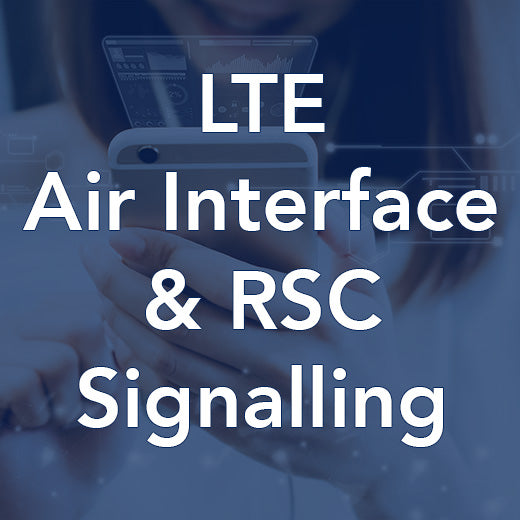
LTE Air Interface and RRC Signalling
Course Code: LT1405 Course Summary A detailed technical description of the air interface signalling protocols employed in LTE. This includes the layer 3 Radio Resource Control (RRC) and layer 2 Packet data Convergence Protocol (PDCP), Radio Link Control (RLC) and Medium Access Control (MAC) protocols. The set of messages and functions supported by each protocol is examined in detail. Who would benefit This course would benefit engineers involved with equipment design, operation, and optimization or monitoring of the LTE radio link. Prerequisites An engineering background with some knowledge of digital radio systems and general radio principles and techniques is assumed. A basic understanding of LTE and experience of 2G or 3G systems would be beneficial. Topic Areas Include RRC - functions and procedures LTE RRC identities and states RRC message structure and ASN.1 Overview of RRC message types System information messages Paging RRC connection management Intra-E-UTRAN and Inter-system Mobility RRC security Security mode command Measurement DL/UL information transfer PDCP control messages RoHC configuration and control RLC control messages, ARQ management and segmentation MAC control elements End-to-End air interface signalling procedure examples
POA: Private Course
-
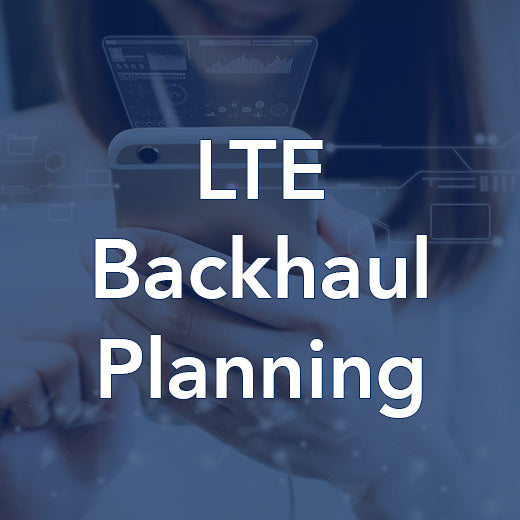
LTE Backhaul Planning
This course provides a detailed overview of the issues related to the planning of backhaul services designed to support 4G LTE Cellular sites in both dedicated and single Radio Access Network (RAN) environments. The course focuses on planning techniques related to the most commonly-employed backhaul technologies used in conjunction with LTE, such as Ethernet, packet-based microwave and IP. It also covers aspects such as timing and security solutions and presents techniques that can be employed to estimate backhaul requirements and plan for suitable deployments. Join our LTE Backhaul Planning Training Course to gain a comprehensive understanding of the planning techniques and technologies essential for supporting 4G LTE Cellular sites. This course is designed for engineers working for network operators involved in the planning and implementation of RANs, specifically focusing on the backhaul region from the cell tower back to the core network. You will learn about backhaul technologies such as Ethernet, packet-based microwave, and IP, as well as timing and security solutions crucial for LTE deployments. Our 1-day course covers topics including backhaul overview, defining 4G backhaul requirements, transport network evolution, synchronization options, VLAN management, and more. By the end of the training, you will be equipped with the knowledge and skills to estimate backhaul requirements, plan suitable deployments, and ensure efficient backhaul solutions for 4G LTE networks. No specific prerequisites are required for this course, making it accessible to a wide range of professionals in the telecom industry. Sign up now to enhance your expertise in LTE backhaul planning and stay ahead in the rapidly evolving telecommunications sector. Who would benefit This course is designed for engineers working for network operators in the planning and implementation of RANs and in particular the backhaul region from the cell tower back to the core network and are looking at the options that exist to provide backhaul solutions suitable for 4G LTE networks. Prerequisites No specific prerequisites for this course although a good understanding of mobile networks and in particular the radio access part of 3GPP based networks. Topic Areas Include Backhaul overview Backhaul planning techniques Defining 4G backhaul requirements Backhaul technologies appropriate for 4G networks Transport network evolution Multi RAT and Multi Operator (MRMO) Synchronization options Cell throughput expectations Industry initiatives and forums Radio to transport QoS mapping VLAN management Backhaul traffic profile Backhaul QoS Planning exercise – cell throughput calculations
POA: Private Course
-
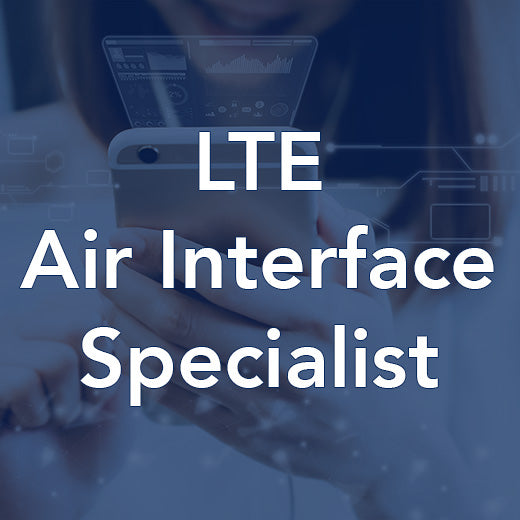
LTE Air Interface Specialist
Course Code: LT1302 Course Summary This course provides a deeper insight into the inner workings of the LTE air interface physical layer to meet the needs of air interface specialists. It offers an opportunity to look more deeply into topics such as OFDMA and SC-FDMA, specifically into the use of Fourier Transform methods and the construction and use of the Cyclic Prefix. The use of Zadoff-Chu sequences for some physical layer functions is also discussed, as are topics such as Reference Signals and the construction, administration and use of LTE physical channels. Who would benefit This course is designed for Radio Frequency (RF) engineers, radio planners, technical support staff and other specialists who have a need to look further into the LTE Air Interface than is possible with less specialised courses. Prerequisites A thorough understanding of the basic and more complex principles of the LTE Air Interface is essential and can be gained from attending Wray Castle’s ‘LTE Engineering Overview’ and ‘LTE Air Interface’ courses. Topic Areas Include OFDMA subcarrier orthogonality OFDMA fourier transform functions Physical signals and Zadoff-Chu modulation sequences SC-FDMA Downlink and Uplink physical carrier configuration Reference signal generation and functions Downlink physical channels: PBCH, PCFICH, PHICH, PDCCH Downlink concepts: REG, CCE, Aggregation Levels, PDCCH Search Spaces PUCCH operation PUCCH resources, regions, formats and operation Downlink Control Information (DCI) and Uplink Control Information (UCI) types and functions PRACH resources, formats, configurations and operation
POA: Private Course
-
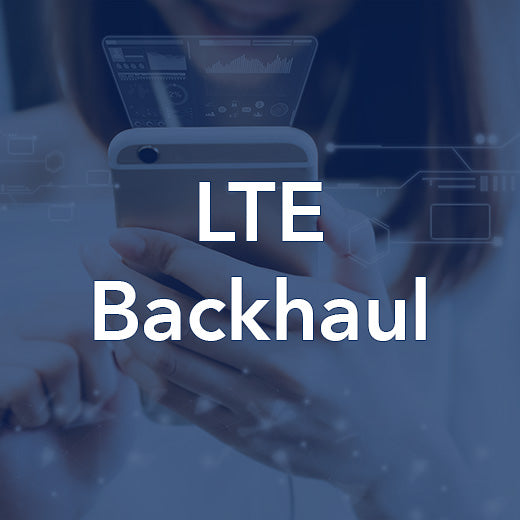
LTE Backhaul
A detailed technical description of the technologies available to be used to support the backhaul requirements of next generation 4G LTE access networks. This includes discussions of underlying backhaul architecture and concepts along with more detailed discussions of the technologies employed to support evolved Radio Access Networks (RANs), including: Carrier Ethernet, MPLS, fibre-optic transmission and packet-based microwave plus other high capacity backhaul technologies. Our LTE Backhaul Training Course (Course Code: LT1202) offers a comprehensive overview of the technologies essential for supporting the backhaul requirements of next-generation 4G LTE access networks. This course dives into the underlying backhaul architecture and concepts, as well as the technologies utilized to support evolved Radio Access Networks (RANs), including Carrier Ethernet, MPLS, fiber-optic transmission, packet-based microwave, and other high-capacity backhaul technologies. Ideal for engineering and technical management professionals involved in the commissioning, design, deployment, or operation of mobile backhaul networks, this course covers a range of topic areas such as backhaul definitions, transport network layered architectures, RAN architectures and requirements, industry forums, and various backhaul options at Layers 1, 2, and 3. Participants will also explore synchronization, redundancy, security options, and Next Generation Mobile Network (NGMN) models, providing a comprehensive understanding of LTE backhaul technologies. By enrolling in our 1-day LTE Backhaul Training Course, participants will gain valuable insights into the latest technologies and best practices for optimizing backhaul networks in the era of 4G LTE. Whether you are looking to enhance your technical knowledge or stay ahead of industry trends, this course is designed to equip you with the skills and expertise needed to excel in the fast-paced world of mobile backhaul networks. Who would benefit This course is suitable for engineering and technical management staff who are involved in the commissioning, design, deployment or operation of mobile backhaul networks. Prerequisites An understanding of mobile network architecture and operation would be beneficial as would an appreciation of legacy backhaul technologies such as TDM or ATM. Topic Areas Include What is backhaul? Transport network layered architectures RAN architectures and requirements Industry forums Layer 1 backhaul options Backhaul architecture models Fibre optics and packet-based microwave Layer 2 backhaul options Ethernet and 802.1Q VLANs Q-in-Q VLAN stacking Carrier Ethernet MPLS Layer 3 backhaul options IP RAN in LTE Synchronization (NTPv4, IEEE1588v2/PTP, Sync-E) Redundancy (MSTP, G.8031/8032) Security options (IPsec, Security Gateway) Next Generation Mobile Network (NGMN) models VLAN traffic forwarding examples for Ethernet-based RANs
POA: Private Course
-
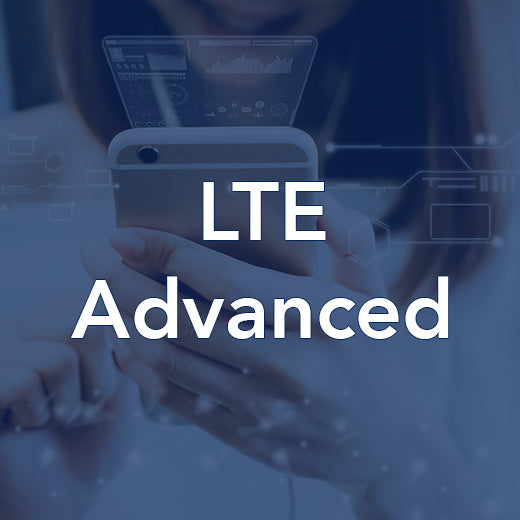
LTE Advanced
This LTE Advanced training course offered by Wray Castle covers essential topics such as an introduction to LTE, carrier aggregation, and additional enhancements in LTE Advanced. With a course code of LT1318, participants can expect to gain a comprehensive understanding of LTE technology and its advanced features. By enrolling in this course, individuals can enhance their knowledge and skills in LTE Advanced, making them more competitive in the telecommunications industry. Whether you are a beginner looking to learn the basics or a professional seeking to stay updated on the latest advancements in LTE technology, this training course offers valuable insights and practical information. Join us at Wray Castle and take your expertise in LTE Advanced to the next level. Course Contents Introduction to LTE Carrier Aggregation Additional Enhancements in LTE Advanced
POA: Private Course
-
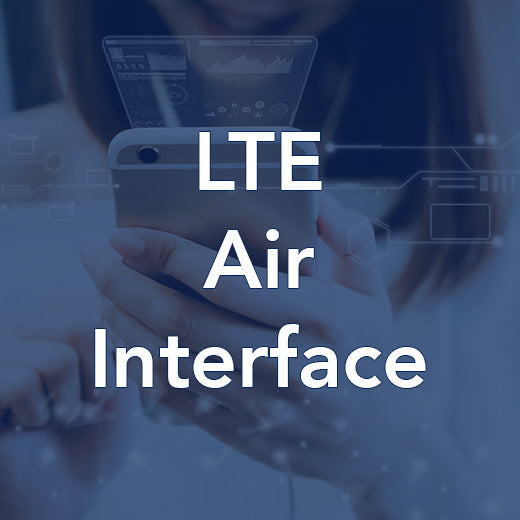
LTE Air Interface
Our LTE Air Interface Training Course is designed to provide a comprehensive understanding of the air interface for LTE radio access. This course covers OFDMA principles, access and non-access stratum protocols, channel structures, connectivity and mobility management procedures, as well as radio link control functions. Engineers involved in equipment design, operation, optimization, or monitoring of the LTE radio link will benefit greatly from this training. Participants are expected to have an engineering background with some knowledge of digital radio systems and general radio principles and techniques. A basic understanding of LTE and experience with 2G or 3G systems would also be beneficial. Topics covered in the course include LTE system architecture, E-UTRAN architecture and interfaces, OFDMA/SC-FDMA basic principles, MIMO concepts and implementation, physical layer structures, access and non-access stratum protocols, and more. Enhance your knowledge and skills in LTE radio access and stay ahead in the rapidly evolving telecommunications industry. Who would benefit Engineers involved with equipment design, operation, optimization or monitoring of the LTE radio link. Prerequisites An engineering background with some knowledge of digital radio systems and general radio principles and techniques is assumed. A basic understanding of LTE and experience of 2G or 3G systems would be beneficial. Topic Areas Include LTE system architecture E-UTRAN architecture and interfaces OFDMA/SC-FDMA basic principles Defining orthogonality OFDMA features and benefits The Fourier transform OFDMA/SC-FDMA transmitter and receiver chains Modulation and coding, MIMO and the Cyclic Prefix MIMO concepts and implementation Physical layer structures Access and non-access stratum protocols Logical, Transport and Physical channels RRC, PDCP, MAC and RLC functions Resource allocation and scheduling strategies LTE-Advanced concepts Lower layer procedures Connection establishment Radio resource management procedures Also available as a Self-Study Online Learning Programme, learn more.
POA: Private Course
-
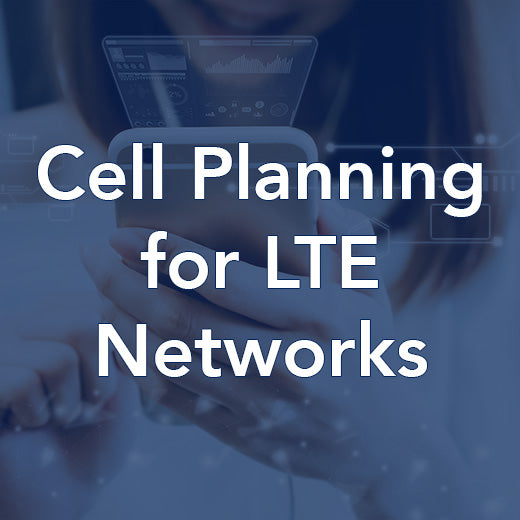
Cell Planning for LTE Networks
Course Summary An introduction to the changes required in the techniques, skill sets and tools for planning LTE networks. This includes link budgets, mixed traffic dimensioning, coverage considerations and tool configuration parameters. All aspects are reinforced through classroom exercises and planning-tool illustrations. Our Cell Planning for LTE Networks training course is designed to provide participants with the necessary skills and knowledge to plan LTE networks effectively. Over the course of 2 days, attendees will learn about LTE planning philosophy, coverage planning, link budgets, LTE cell parameters, RACH planning, traffic analysis, dimensioning for capacity, frequency planning, planning for VoLTE, predictions and simulations, co-siting issues with legacy technologies, and RF exposure limits. Through a combination of classroom exercises and planning-tool illustrations, participants will gain a comprehensive understanding of the changes required in techniques, skill sets, and tools for planning LTE networks. This course is ideal for individuals involved in cell planning, configuration, or optimization of LTE-based networks. It assumes existing knowledge of basic cell planning principles and familiarity with the cell planning role. By the end of the training, participants will be equipped with the necessary tools and techniques to effectively plan LTE networks and ensure optimal performance. Join us for this insightful and practical training course to enhance your skills and expertise in LTE network planning. Who would benefit This course is intended for those involved in cell planning, configuration or optimization of LTE-based networks. Prerequisites This course assumes existing knowledge of basic cell planning principles and familiarity with the cell planning role. Topic Areas Include LTE planning philosophy Coverage planning and link budgets LTE cell parameters RACH planning Traffic analysis Dimensioning for capacity Frequency planning Planning for VoLTE Predictions and simulations Co-siting issues with legacy technologies RF Exposure limits Includes exercises.
POA: Private Course
-
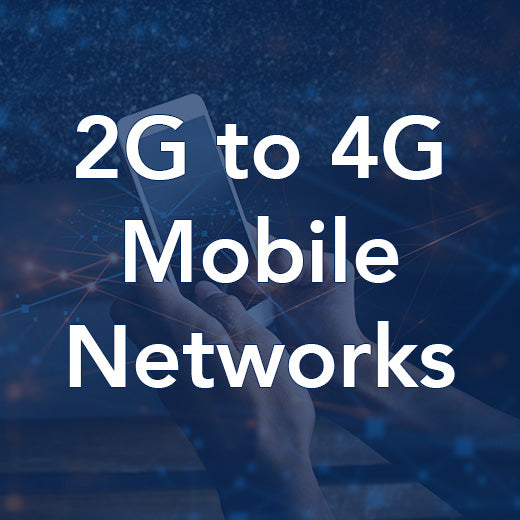
2G to 4G Mobile Networks
Course Code: MB1404 Course Overview This 2G to 4G Mobile Networks training course offered by Wray Castle provides a comprehensive technical overview of key cellular technologies, including 2G GSM, GPRS, 3G UMTS, and 4G LTE, all in one convenient package. Designed for technical professionals who need a solid understanding of these technologies without the need to delve into each one separately, this course is ideal for engineers, technical sales representatives, technical managers, and other staff members looking to gain a broad understanding of modern mobile technologies.Participants in this course do not need any specific prerequisites other than the ability to grasp technical information, making it accessible to a wide range of individuals interested in expanding their knowledge of mobile networks. The curriculum covers essential topics such as PSTN overview, SS7 signaling basics, call control signaling, GSM CS domain interfaces and protocols, UMTS architecture, LTE, and more. By the end of the training, attendees will have a solid foundation in 2G to 4G mobile networks, enabling them to better navigate the complexities of modern cellular technologies in their professional roles. Who Would Benefit This course is suitable for engineering, technical sales, technical management and other staff who require a general technical overview of modern mobile technologies but who do not need to invest the time necessary to learn about each technology in depth. Prerequisites This is a technical foundation course. Candidates do not need any specific prerequisites other than the ability to grasp technical information. Course Contents PSTN Overview SS7 Signalling Basics Call Control Signalling, ISUP and SCCP 2G Circuit Switched Domain GSM CS Domain Interfaces and Protocols CAMEL GPRS UMTS Architecture Overview UMTS Air Interface UMTS Circuit Switched Core – Protocols and Procedures UMTS Packet Switched Core – Protocols and Procedures LTE
POA: Private Course
-
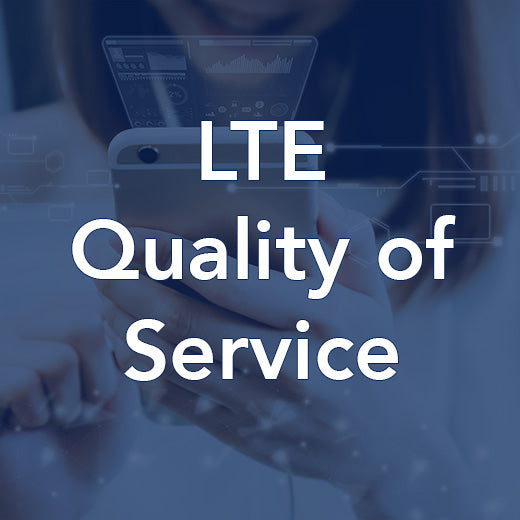
LTE Quality of Service
Course Code: LT1314 Course Summary Our LTE Quality of Service training course is designed to provide a comprehensive understanding of the key concepts and principles behind Quality of Service (QoS) in LTE networks. This course delves into the End-to-End EPS Bearer and the underlying Transport Network Layer (TNL) where QoS is crucially applied. Participants will explore the main QoS concepts and learn about the interworking between LTE QoS and other network types such as UMTS, GPRS, and IMS.This course is ideal for engineering and technical management professionals who need a technical overview of the technologies and techniques utilized by 4G LTE networks to define and control the QoS for user connections. Participants are expected to have an engineering background with some knowledge of telecommunications technologies and protocols. Previous LTE training and familiarity with QoS mechanisms in legacy 2G and 3G networks would be beneficial.By enrolling in this course, you will gain insights into topics such as E-UTRAN architecture and interfaces, EPS Bearer and PDN Connectivity options, LTE QoS parameters, QCI, ARP, QoS Management, LTE PCC mechanisms, TNL concepts, DiffServ, MPLS, Ethernet QoS, and much more. Enhance your knowledge and skills in LTE QoS with our expert-led training course. Who would benefit This course is suitable for engineering and technical management staff who require a technical overview of the technologies and techniques employed by 4G LTE networks to define and control the QoS applied to user connections. Prerequisites An engineering background with some knowledge of telecommunications technologies and protocols is assumed and previous LTE training would be beneficial, as would knowledge of QoS mechanisms in legacy 2G and 3G networks. Topic Areas Include E-UTRAN architecture and interfaces EPS Bearer and PDN Connectivity options and operations User plane connection concepts, packet flows, SDFs and Traffic Flow Aggregates LTE QoS parameters, QCI, ARP QoS parameter representation in LTE signalling protocols QoS Management – TFTs and packet filters LTE PCC (Policy and Charging Control) mechanisms PCC Rules, function and structure Interaction between PCC elements and internal and external network nodes Mapping LTE QoS to legacy network schemes Measuring QoS TNL concepts, architecture and QoS mechanisms DiffServ, MPLS and Ethernet QoS End-to-End QoS Architecture and Operation Network node QoS functions QoS influence on LTE handovers Also available as a Self-Study Online Learning Programme, learn more.
POA: Private Course





























































